Veterinarian
Australian Mammal of the Year 2022 Aussie vets return from Ukraine
Two veterinarians from regional Victoria have returned to Australia after weeks helping injured animals in Ukraine.
Experienced vet Emma Tomkins and nurse Pauline Lillie run Hepburn Veterinary Clinic in Daylesford.
In August the couple decided to pitch in and treat vulnerable animals in the war-torn nation through an initiative run by Worldwide Vets, a not-for-profit.
A community fundraising campaign raised $ 31,000 to cover costs, and Tomkins and Lillie departed Australia on September 8 for a convoluted trip to Vinnytsia in west central Ukraine, the ABC reports. With millions of people fleeing
the area, vast numbers of animals have been left without care.
“I was pretty nervous as I didn’t know what to expect at the other end … it was all a bit confronting and unknown,” Lillie told ABC News.
She described the Ukrainian work site as a large warehouse with pine partitions and no doors, with accommodation quarters consisting of sleeping bags on pallets.
The two spent their time working with locals to treat injured animals, including dogs, cats and ferrets.
“That was familiar ground for us as we knew what we were doing and work well as a team,” Lillie said. To page 30
Devised as a fun way to both showcase Australia’s diverse wildlife and highlight the decline of many species due to habitat destruction from floods, drought, bushfires or land clearance, the winner in COSMOS Magazine’s inaugural competition to determine the most popular Australian mammal, was the tiny and critically endangered southern bent-wing bat (Miniopterus orianae bassanii).
More than 50,000 votes were received from around the world during the ‘wildly popular’ competition voting period that saw the tiny coastal cave dwelling insectivorous bat beat the dingo into top spot when the winner was announced in August.
COSMOS editor Gail MacCallum said the election had been an eyeopener, and admitted that before it began, she had been unaware of the southern bent-wing bat.
“That’s kind of the point of the whole thing. You can’t help a fellow Aussie if you don’t know about their battles and let’s not beat around the bush, we’ve been killing our mates for too long,” she said.
Already this year six native mammal species have had their conservation status upgraded from vulnerable to
endangered, or from endangered to critically endangered, with three more added to the threatened species list during the eight-week competition. MacCallum said voting and social media support was sustained and passionate throughout the election, with scrutineers being called in to ensure the integrity of the vote, such was the backing of various ‘tribes’. The koala and kangaroo failed to make the Top Ten.
“This species loss has to stop, and that involves us starting the pushback for them, with better protection laws. They live nowhere else and once they’re gone, they’re lost forever,” MacCallum said.
For Emmi van Harten, coordinator for the Southern Bent-winged Bat National Recovery Team, the competition provided a ‘fantastic’ opportunity to get conversations happening about species people may never have heard of.
“It’s that community awareness and support that’s really important for changing the trajectory of some of our endangered species,” she said.
Voting for the Australian Mammal of the Year will be held again next year.
■ ANNE LAYTON-BENNET
AVA lobbies for government investment
The AVA is calling on the Victorian government to invest in key areas critical to veterinarians.
The Association is lobbying for sustainably resourced essential veterinary services, protection of the mental health of vets, and modernisation of animal care and protection legislation.
AVA Victorian Division President Hugh Millar said it is unsurprising that veterinarians
are in shortage on the 2022 Skills Priority List report.
“People are leaving the veterinary profession because it’s not sustainable, that is, they feel they can’t make a valuable contribution and at the same time safeguard their own health and welfare,” Millar said.
“Day to day this looks like long hours, lack of flexibility, high educational debt To page 30
■ October 2022 ■ www.theveterinarian.com.au NEWS Mobility challenges NEWS Virbac supports WSAVA FEATURE Laser technology 23 KIWI POST 9 ABSTRACTS 14 MANAGEMENT 15 CLINICAL FEATURE 17 BUSINESS 29 The ONTHE INSIDE >>>>>>>>
5 10
CLINICALREVIEW
Naomi Hansen
3
Picture Terry Reardon
Pauline Lillie and Emma Tomkins


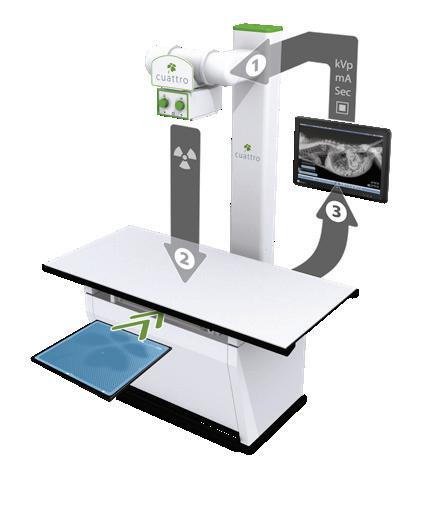
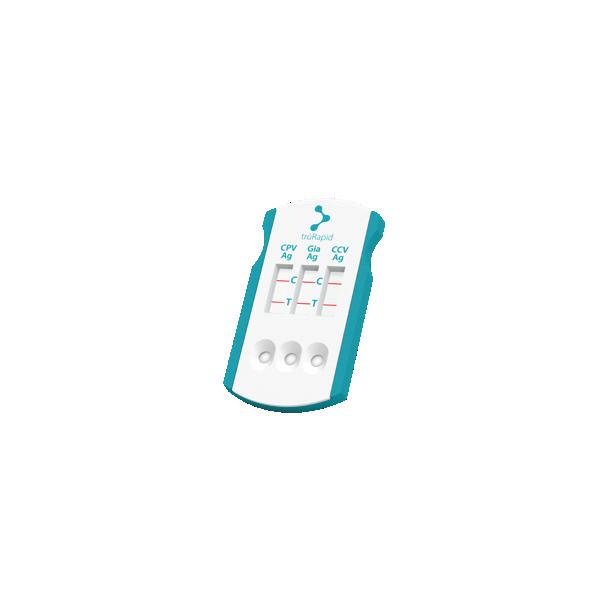



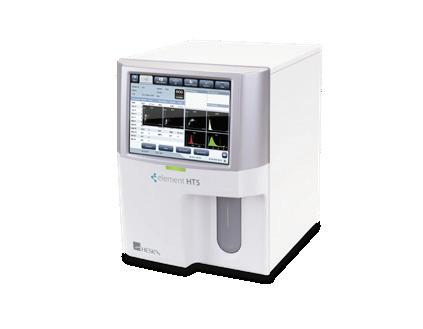
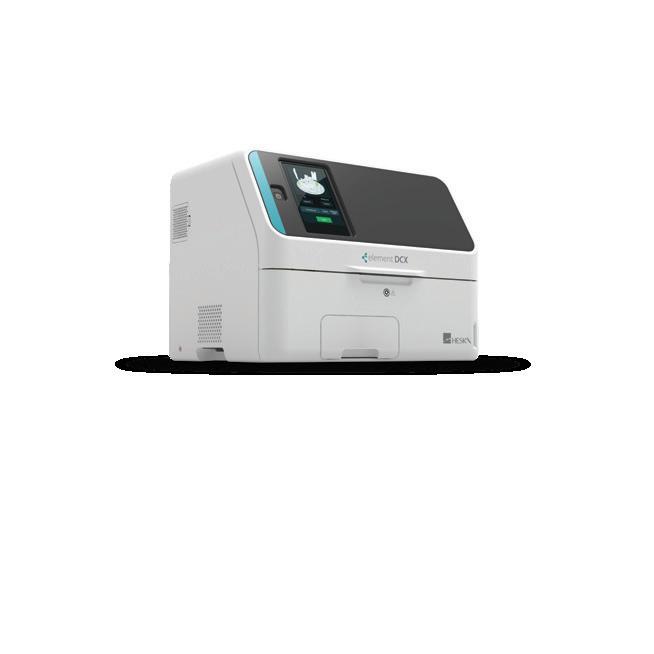
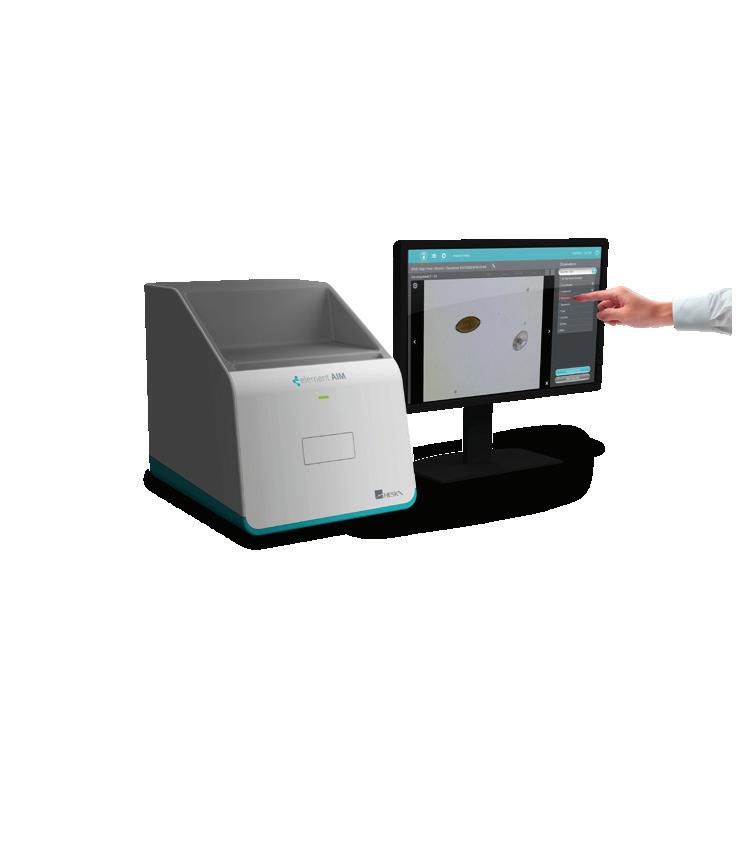
Internet BasedPACS HeskaView Cloud HDDigital Radiogr Cuattro DRHD SingleUse RapidTests trūRapid Telecytology Pathologists HeskaView Telecytology Scanner HeskaView ImmunodiagnosticAnalyser eterinaryHematologyAnalyse r Element HT5 Veterinary ChemistryAnalyser CX ArtificialIntelligenceMicroscopy Element AIM Your diagnosis, their voice. Find out what there is to discover. Call Heska today. Through innovation, invention, and strategic partnerships with worldwide leaders in diagnostics, Heska provides the bene ts of latest generation technologies to veterinary professionals. From our ever-growing and wide range of in-house lab and imaging solutions, to outstanding service and support, discover all the ways Heska helps you provide a voice for your patients. www.heska.com.au 1300 437 522 ©2022 Heska Corporation. All Rights Reserved. HESKA, Element AIM, Element i+, Element HT5 and Element DC5X are registered trademarks and Element DCX, Heskaview, Cuattro DRHD, Reset, and trūRapid are trademarks of Heska Corporation in the United States and other countries. AU22AD0902 DISCOVER HESKA
Surgeries launch service for clients with mobility challenges Ovine brucellosis outbreak worry
belts and ample space for mobility aids – with room for one additional passenger, such as a family member or personal carer. The vehicle is not a pet taxi, nor is it an ambulance for emergencies. It is a service to facilitate non-emergency transport for clients with various mobility challenges to veterinary appointments at either the Caloundra Vet Surgery or Battery Hill Veterinary Surgery.
An ovine brucellosis (OB) outbreak is causing alarm among sheep producers in Queensland.
From November, this year,
Caloundra Vet Surgery and Battery Hill Vet Surgery are launching a service for clients living with mobility challenges. A courtesy veter-inary transport service will become available to clients requiring a wheelchair or mobility aid, and clients who are socially isolated and unable to drive, using a wheelchair lift-equipped Hyundai Staria van.
“Wewant to give back to the community by offering a transport service at no cost, to support clients who have been with us for many years, who have lost independence or mobility due to their age or different circumstances, and of whom their pets are very important members of their family,” business manager Luis Marquez said.
The van is equipped with a wheelchair lift, wheelchair safety
Aproblem of plague proportions
Although five domestic rabbits arrived in Australia with the First Fleet their offspring were not the reason rabbits spread so rapidly across the country.Astudy published recently in the journal Proceedings of the National Academy of Sciences has confirmed these domestic rabbits were not to blame, and neither were the subsequent 90 importations of rabbits up to 1859.
As historians have long assumed the culprits were 24 wild rabbits, brought to Australia from the UK county of Somerset by Thomas Austin and released on his Barwon Park estate near Geelong.
Researchers analysed historical records alongside new DNA collected from 187 European rabbits – mostly
wild – caught across Australia, New Zealand, Britain and France between 1865 and 2018. They found evidence that most of Australia’s mainland rabbits derived from these 24 animals, that were probably better adapted to the natural environment due to their wild ancestry. Certainly by the beginning of the 20th century rabbits had created a ‘grey blanket’ across the country, suggesting a genetic pattern in rabbit populations consistent with the reported rabbit plague and demonstrating that certain genetic types can be predisposed to be successful invaders.
Co-author Mike Letnic, a professor at the University of NSW’sSchool
Many of Caloundra and Battery Hill Vet’s long-term clients have built strong relationships with veterinarians and allied staff. Due to ageing, mobility difficulties or lack of independence, many of these clients become unable to attend visits at the clinic with their pets, which, in addition to being an essential part of their pet’s care, may have also been a life-enriching activity. Although this service is intended to reward the loyalty of long-standing clients, it will also be available to new clients.
The service will operate Monday to Friday between 8am and 4pm from the beginning of November, in the Caloundra and Battery Hill areas. The practices intend to expand the service to the Buderim, Marcoola, and Nambour areas.
For moreinformation about the service, call Caloundra Veterinary Surgery on (07) 5492-7997.
of Biological, Earth and Environmental Sciences, said although detailed information and accounts were often lacking in the sources about where animals came from, in the case of Australia’s wild rabbits, they are very well documented, ‘as one of the most successful biological invasions in the world’.
“While several factors contribute to biological invasions, including the number of individuals, the number of introductions and environmental change, the new findings indicate the genetic composition of those animals can be just as influential,” he said.
Previous studies disputed the single-origin hypothesis, arguing that invasive rabbits arose from several independent introductions, but samples of ancestral To page 30
The highly contagious bacterial infection is spreading in the state and producers are concerned some studs are misleading ram buyers about their disease status.
OB is found in ram semen and can cause infertility, abortions in pregnant ewes and weak offspring. Itdoes not affect humans.
Graziers are worried that unregistered breeders are falsely claiming to have accreditation proving their animals are not carrying OB, the ABC reports.
Some breeders have been suspicious about the accreditation scheme since false positive results from a Queensland governmentrun lab led to destruction of healthy lambs in 2015.
Testing protocols have since been updated to ensure repeat testing after any positive results.
Most of Queensland's studs participate in Ovine Brucellosis Accreditation Scheme, a voluntary process that tests flocks to maintain accreditation.
However, the recent outbreak has raised questions about the legitimacy of some accreditation.
Will Roberts runs a merino stud in Morven, sits on the council of the Queensland Merino Stud Sheep Breeders Association, and said there was major concern in rebuilding wool and sheepmeat industries.
“There are people out here who have set themselves up as studs but they’re not following all the right protocols and, as a result, we get things like this popping up,” Roberts told the ABC.
Roberts added it is not only in merinos, but also British breeds and shedding breeds.
“People aren’t aware of what their obligations should be if they’re going to be a ram breeder,” he said. To page 30
News TheVeterinarian 3 OCTOBER 2022 www.theveterinarian.com.au SYDNEY 12 November
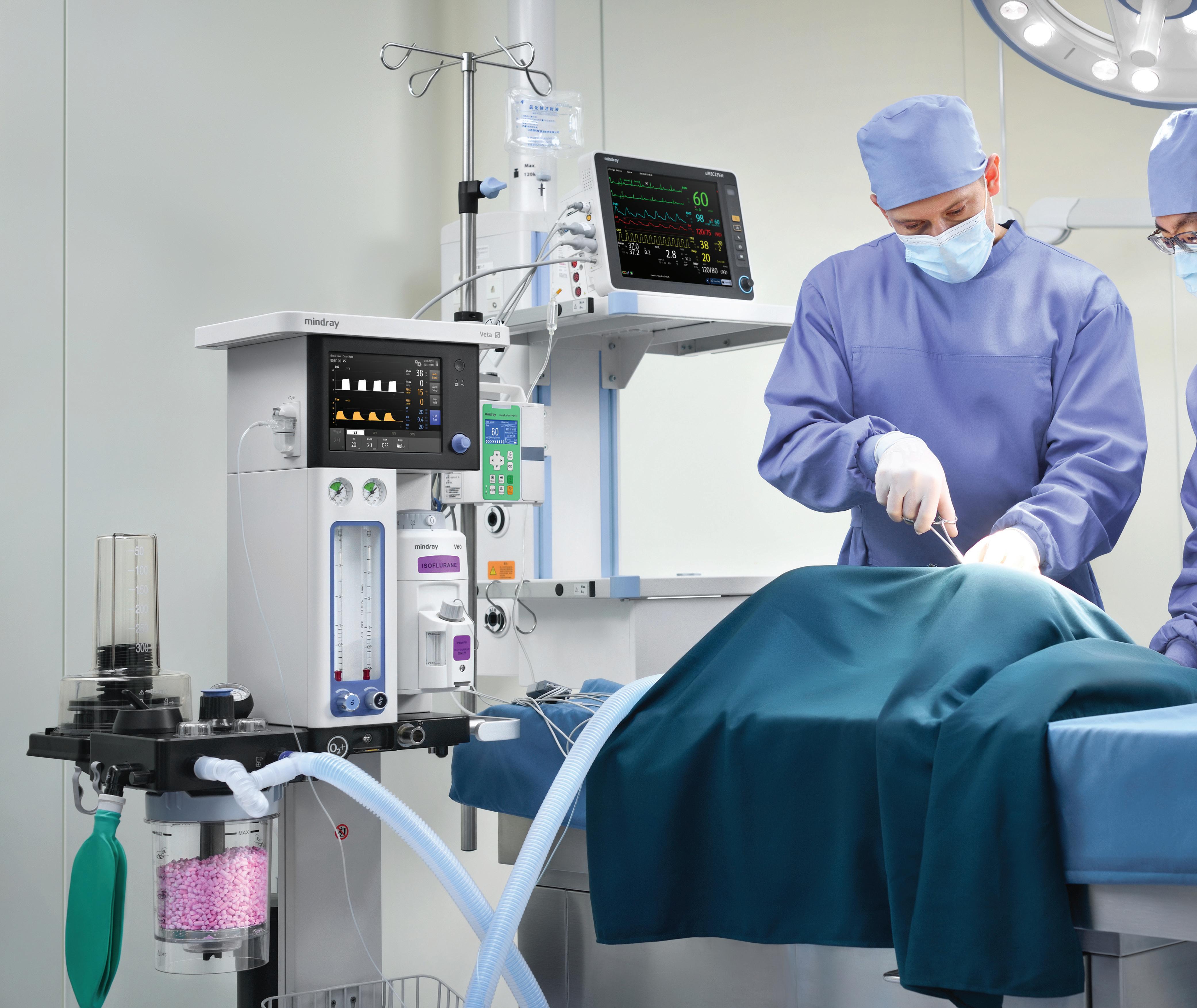
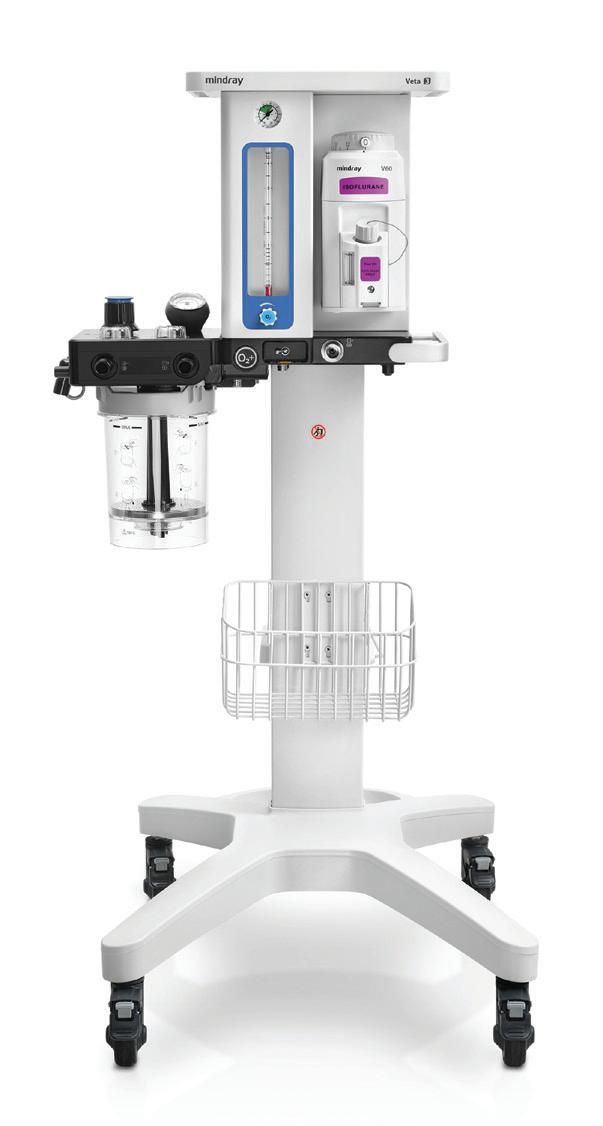
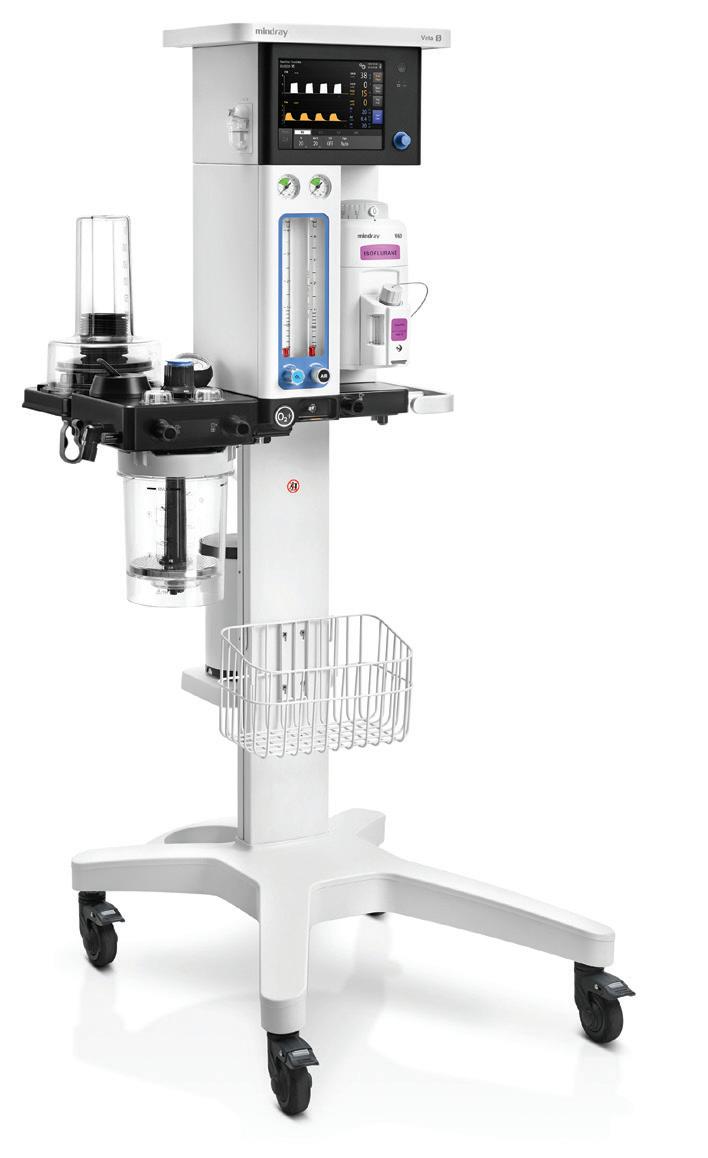
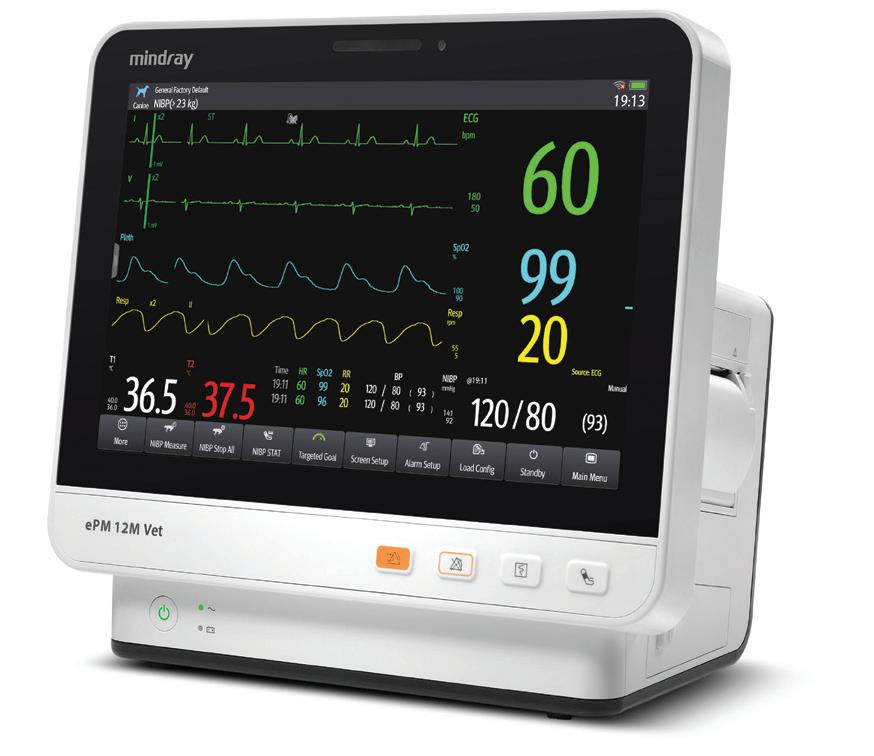
881 681 or +61 3 9758 2500
1300
contact@soundveterinary.com.au www.soundvet.com.au
Virbac supports WSAVA reproduction initiatives
than 200,000 veterinarians worldwide through its 114 member associations and works to enhance standards of clinical care for companion animals.Its core activities include the development of WSAVA Global Guidelines in key areas of veterinary practice, including pain management, nutrition, and vaccination, together with lobbying on issues affecting companion animal care worldwide. One of the Reproduction Control Committee’s first tasks is the development of a set of WSAVA Global Guidelines in this important area of veterinary medicine. To page 30
Clues to help protect frogs from deadly Bd virus
Astudy published in the journal Transactions of the Royal Society of South Australia has found that although the incidence of the fungus Bd (Batrachochytrium dendrobatidis)was significantly reduced in populations of captive-bred frogs, captivity can also have negative consequences for the frogs’ protective skin microbiota.
Huron
Animal health company Virbac has partnered with theWorld Small Animal Veterinary Association to support its recently created Reproduction Control Committee.
The Committee is working to ensure that veterinarians globally have access to the latest resources and knowledge in the rapidly evolving area of reproduction control.
It is chaired by Stefano Romagnoli, aEuropean Veterinary Specialist in Animal Reproduction (Dipl ECAR) from the University of Padua in Italy and comprises reproduction experts from around the world.
The WSAVA represents more
Since being linked to the decrease in frog populations during the 1990s the Bd infection - also known as chytridiomycosis -is now widespread in 56 countries across six continents, and from data collected in 2019 is believed to have contributed to population declines in 501 amphibian species globally. Of these, 90 species are now presumed to be extinct in the wild, with an additional 124 populations having decreased byover 90 per cent. The disease is thought to cause the record number of frog deaths in Australia.
Lead author Darislav Besedin, a University of South Australia researcher and master’s candidate, said finding ways to protect frogs from the lethal Bd fungus infection was a critical step in conserving global biodiversity.
“The world is currently undergoing a sixth mass extinction where ahigh percentage of distinct species particularly amphibians – are dying out. Yet what most people
don’t immediately consider is that every species is interconnected. When one becomes extinct, a range of other species is also affected creating a domino effect that can have devastating impacts on the environment. The drastic decline of amphibians in the last several decades from the lethal Bd infection is a clear sign there’s an ecological imbalance, so monitoring affected species is vital,” he said.
The world first study involved 24 common Australian eastern froglets (Crinia signifera), a species found in Tasmania and eastern Australia, from central Queensland through Victoria and along the coast of South Australia. The frogs were placed into captivity for four weeks and exposed to a range of water salinity levels to determine how captivity and water salinity affects Bd infection. Researchers found the infection was reduced during this period, but although water salinity was not the cause of the decrease, they noted a natural skin shedding process that could assist frogs to reduce their Bd loads.
“This study provides important clues for managing endangered frog species, most importantly that the Bd infection can be eradicated among captive populations. At this point we assume this has Topage 30
News TheVeterinarian 5 OCTOBER 2022 www.theveterinarian.com.au
Sebastian
Siraya Chunekamrai





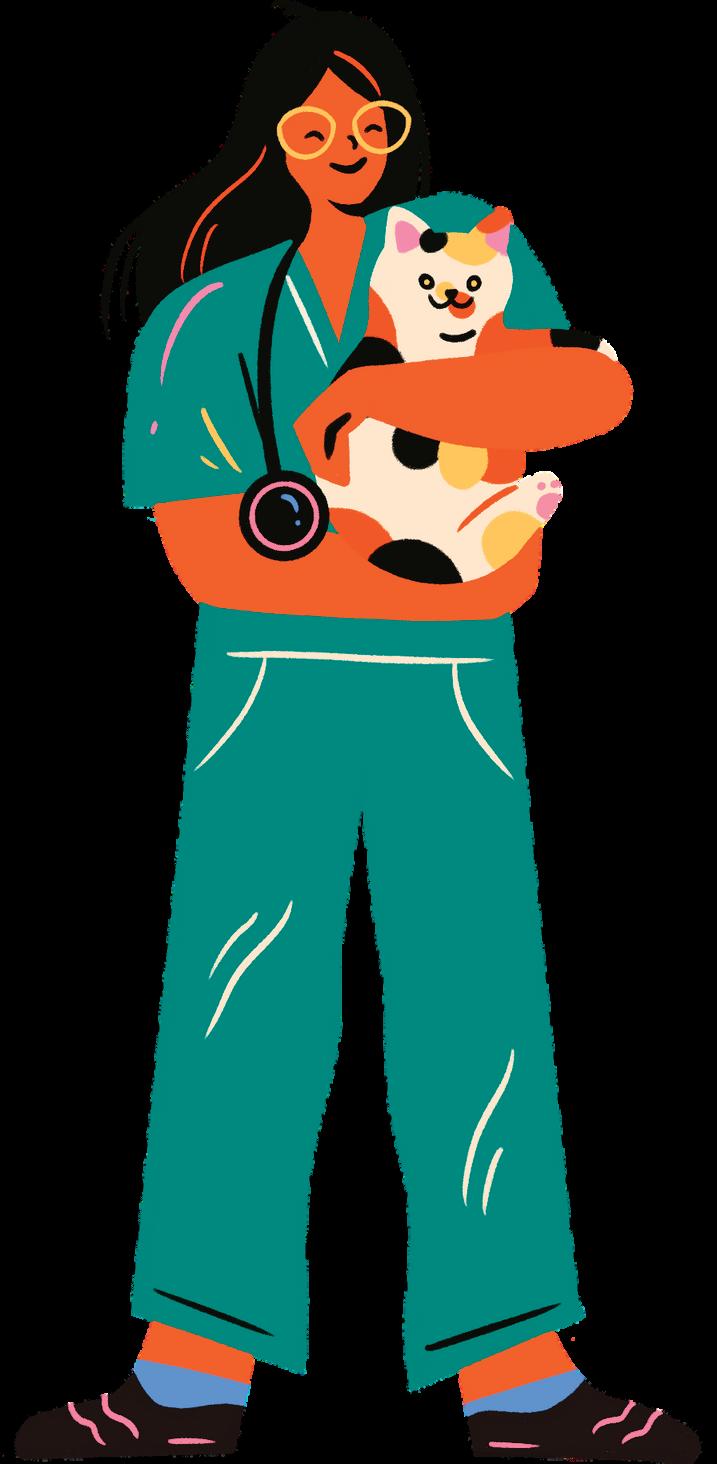




EARN CPD AND SAVE 70% ON A DELEGATE TICKET REGISTER NOW WITH DISCOUNT CODE THEVET70 26 & 27 October 2022 | ICC Sydney Australia’s all in one business festival for vets, animal health professionals and the business of pet care 150+ Speakers 100+ Exhibitors 2000+ Attendees 26 & 27 October 2022 | International Convention Centre Sydney Find out more information at thevetexpo.com
Global search underway for more Bondi Vets
The stable of vets on the popular Bondi Vet TV series is about to get bigger with the announcement of aglobal search for more vets to join the team.
The show’s producers have put out a call to pet lovers the world over to nominate their favourite vets to be part of the line-up of the popular long-running series.
Executive Producer Wes Crook said Bondi Vet had become a global phenomenon, being telecast in 180 countries and with more than three million followers on Facebook and YouTube.
“Pet lovers all over the world can’t get enough on their social and digital channels.As well as producing a new TV series every year, we’re now creating and posting new content for our audiences every day of the year,’’ Crook said.
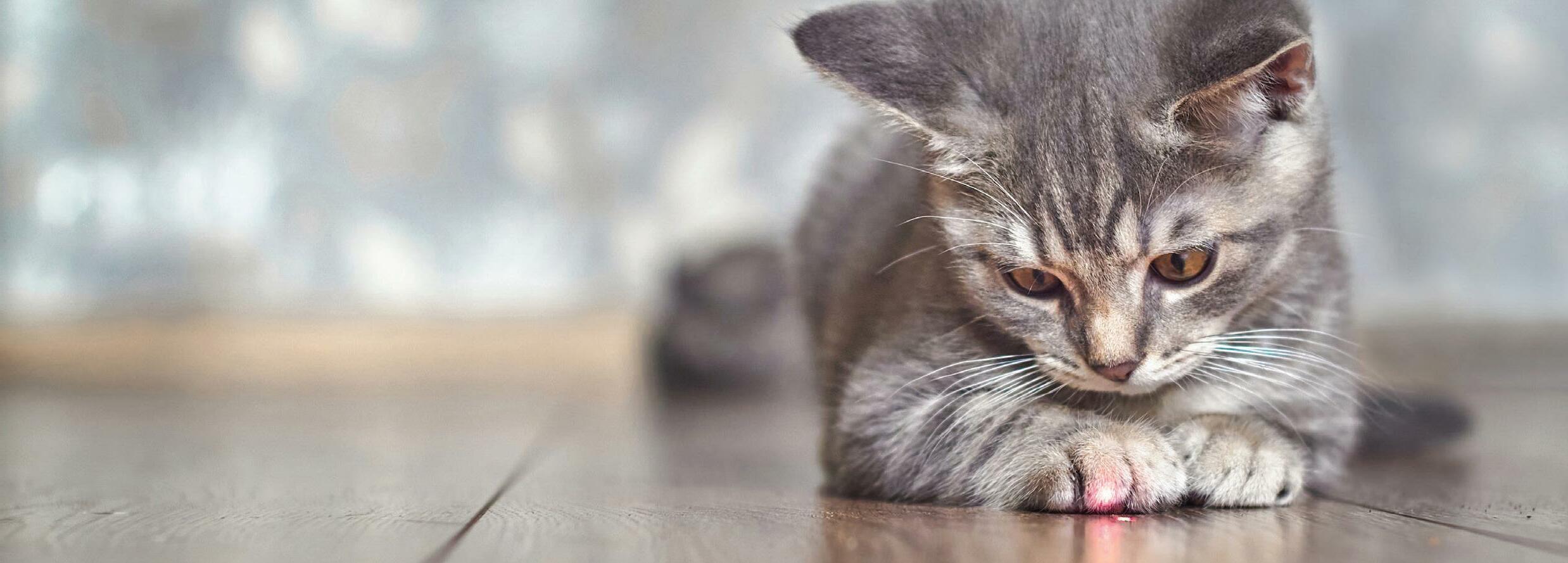
“Inorder to keep up with the audience demand, we need more Bondi Vets in Australia and abroad.
“The people we are looking for must obviously be good vets who demonstrate their passion and care for their patients every day, but we’re also looking for vets with the X-factor who are strong communicators, have plenty of personality, and relate just as well to their customers as their pets,” Crook said.
“We’ve got a great team of vets here in Australia, including Kate Adams, Audrey and Alison Shen, and Rob Zammit.However, they all work fulltime in their own very busy practices, and our social channels are hungry for more content, sothis expansion will ensure we can cover more stories all year round.”
The iconic show last cast for the series in 2017 following the departure of iconic star Chris Brown. The public was consulted at that time too, unearthing the likes of Kate Adams, and Audrey and Alison Shen. They make up the current line-up which also includes
London-based Aussie vet Scott Miller, and Atlanta-based Arvid Edward.
“We have huge audiences in both the US and UK and we’re keen to see who else our viewers believe has that special quality to join the team.
“As an added incentive to find the best vets, the show’s producers have offered a holiday for two to the home of the show, Bondi Beach, for the person who sends
in the best nomination.
“The winner will stay in superb accommodation with a view right down the famous beach. And most importantly, they will also get to meet one of the Bondi Vets and see them in action.
To nominate a vet you think has what it takes to be a Bondi Vet, visit www.bondivet.com.
Hope for endangered ‘Goldilocks’ species
Although many people have suffered as a result of Victoria’s high rainfall this year, a recent survey of the population of the critically endangered plains wanderer ( Pedionomus torquatus) suggests the heavy rain may have benefited this tiny ground-dwelling bird.
Plains wanderers evolved in Gondwana over 100 million years ago but are now found only in the grasslands of south-eastern Australia. With between 250 and 1000 of the fawn-coloured quail-like birds estimated to still exist in the wild, the species is ranked top priority for conservation action for birds globally by the Zoological Society of London.
Since 2010 researchers from LaTrobe University, in partnership with North Central Catchment Authority, have conducted annual surveys of plains wanderer numbers in native grasslands across private and public land on Victoria’s Northern Plains, but ecologist and La Trobe PhD student
Dan Nugent said this year’s result was the best yet.
“We detected 60 adults and 41 chicks. This is more than double the previous best result in 2018 when 30 adults and 17 chicks were detected. A further encouraging sign was that 85 per cent of monitoring sites supported plains wanderers – the highest percentage of sites since surveys began,” he said.
Project Manager at CMA Laura Chant, said in addition to improvement in technology and survey methods, the record numbers were likely the result of both human and non-human intervention.
“The La Nina climate cycle facilitated a widespread and prolonged breeding event which is likely to have boosted their numbers. It’s also highly likely habitat management and protection measures that we, and several partner organisations, have taken over many years to protect this incredible bird, are proving highly effective. They include
conservation covenants and strategic grazing of conservation reserves,” she said.
Plains wanderers are extremely fussy about their preference for grassland habitat so land clearing for crops and pasture is considered the species’ greatest threat – hence the ‘Goldilocks’ tag – but their natural camouflage, and wariness of predators makes detectability a major challenge for researchers.
“In Victoria, habitat loss driven by conversion of native grasslands to croplands is a major threat. If we can put a halt to this loss the future of the birds looks really bright. It’s estimated less than four per cent of the pre-European extent of native grasslands remain on the Northern Plains. They have so little habitat left we can’t afford to lose any more, and it continues to make the population vulnerable.
Fox predation may also be a threatening process, but this remains aknowledge gap,” Nugent said.
■ ANNE LAYTON-BENNET
News TheVeterinarian 7 OCTOBER 2022 www.theveterinarian.com.au SCAN AND BOOK before 16th December, 2022 Join us for our new Lunch ’n Learn series DEBUNKING LASER THERAPY MYTHS Book a FREE Lunch ’n Learn at your clinic to discuss the facts about Class IV laser therapy. Discover a wealth of veterinary-specific evidence supporting its use for pain management, inflammation reduction and accelerated healing.
Pictures JJ Harrison
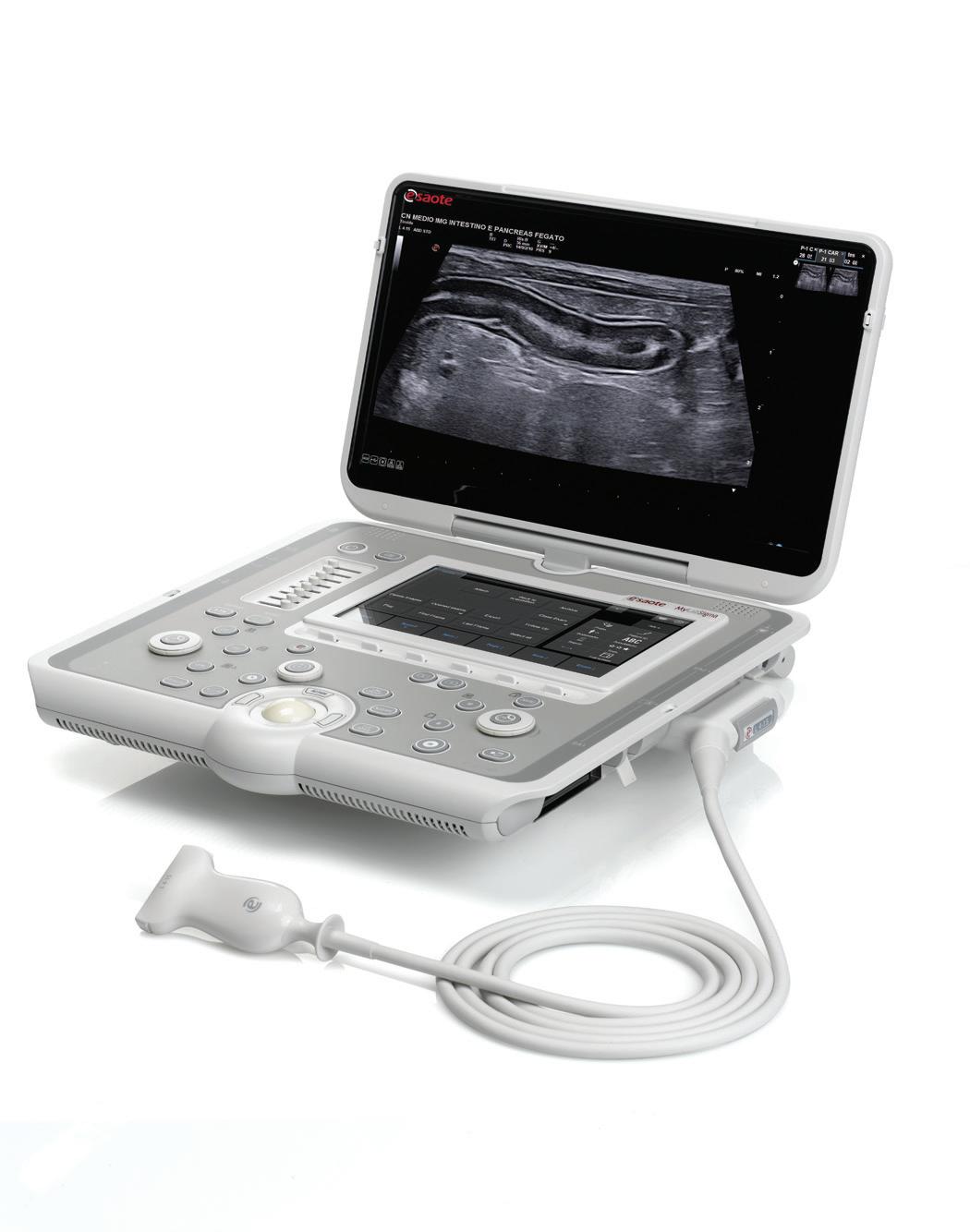
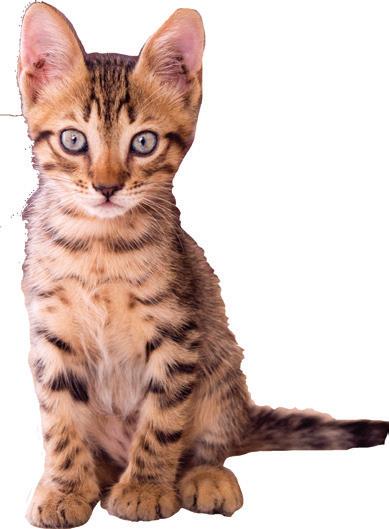

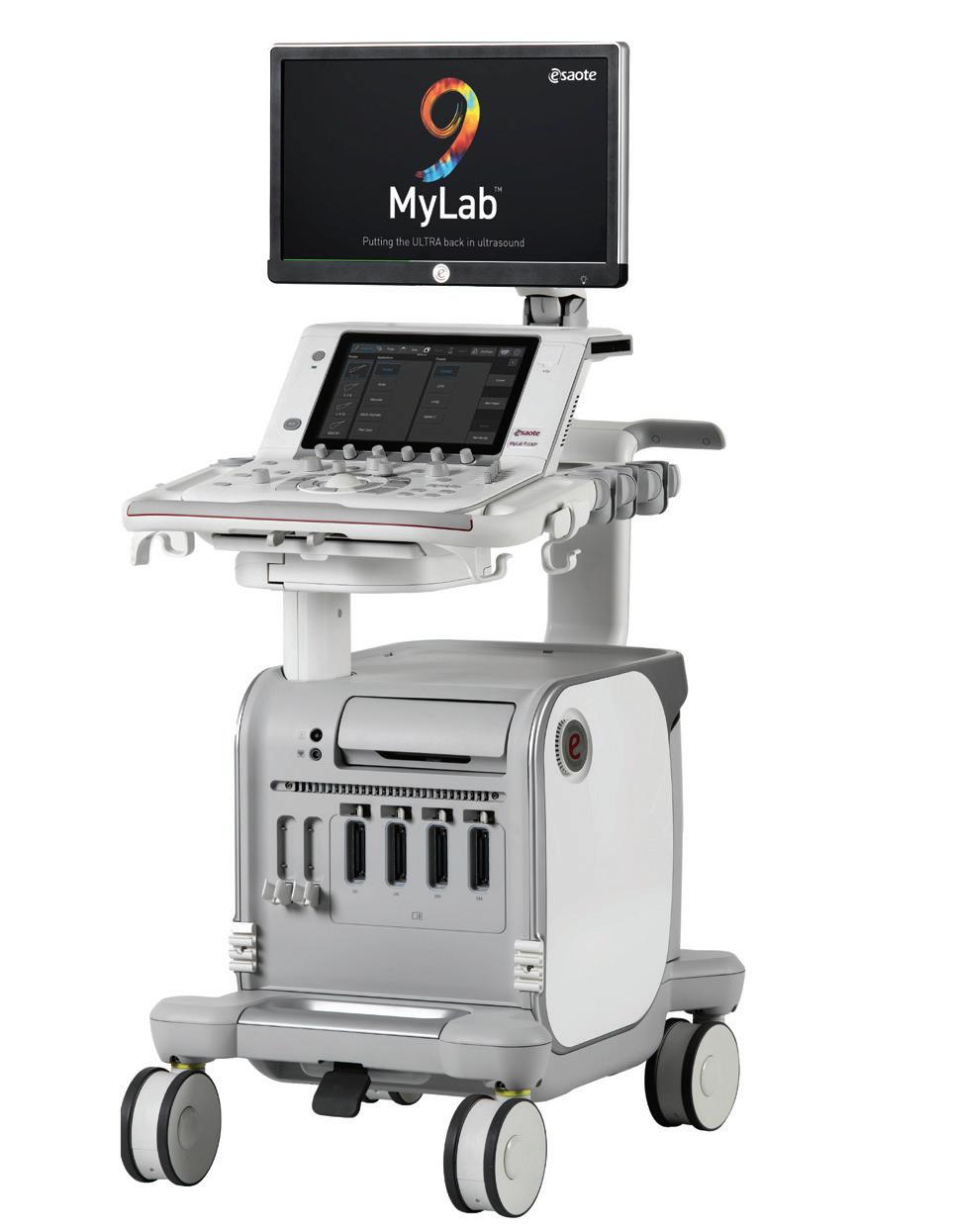
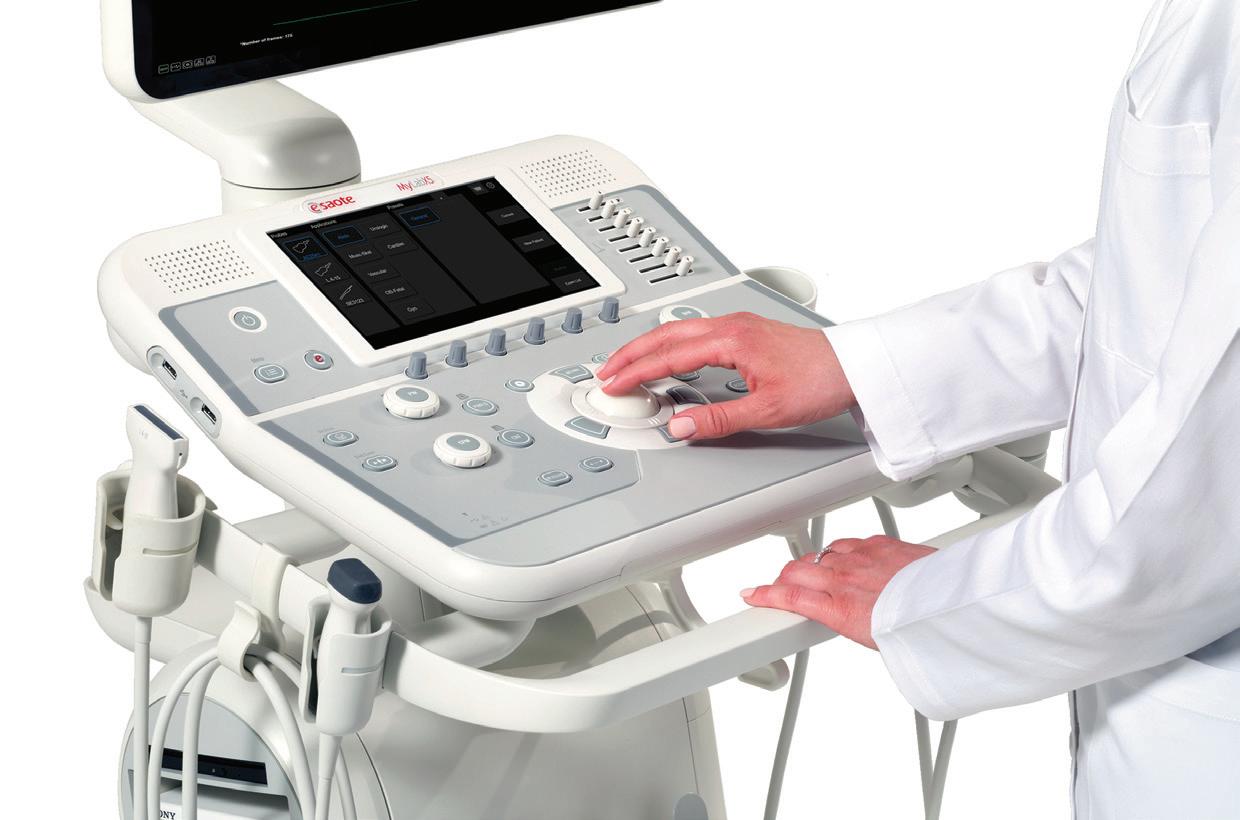
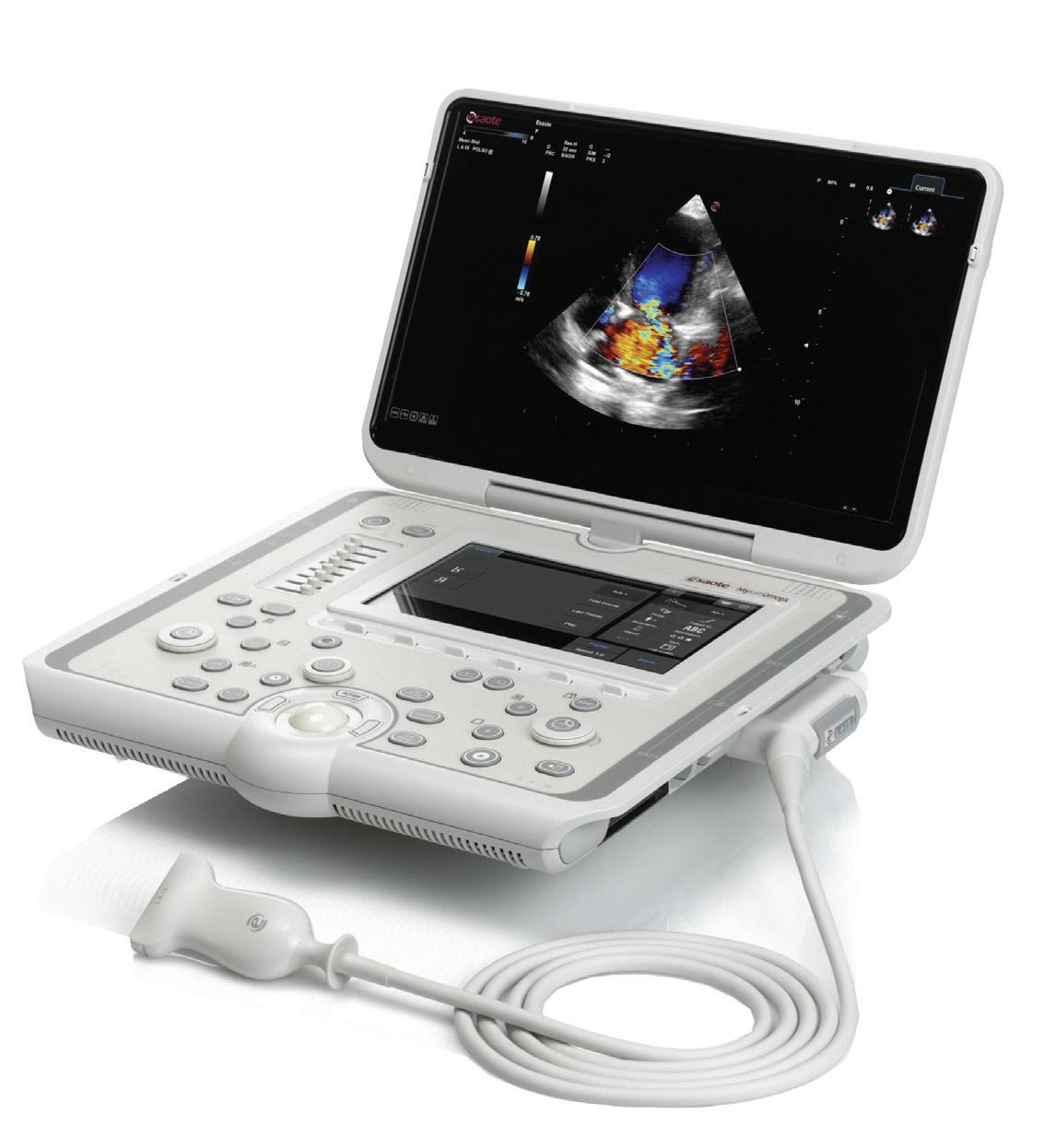
IMAGING SPECIALIST
VETERINARY
Kiwi Post
We’ve probably all been there. You see a semiregular client with their ageing dog, which has a bunch of chronic conditions that are currently managed with varying degrees of success. She’s become more acutely unwell and it doesn’t take you very long to diagnose that she now has a splenic haemangiosarcoma. The prognosis is hopeless and you recommend euthanasia.
For the owner this comes as a shock they are not prepared for and they want to know if there are any treatment options. Radical surgery is unlikely to be successful and the owner at least understands that this would be unfair on the dog. But they press you to consider other medical treatment options. There aren’tany of course, but she may improve on NSAIDs or even preds for a few days.
You press harder on the euthanasia option but the owner insists on ‘giving the tablets a try’. So you send them home with their meds and a lump in your heart that stays with you through the day and only fades on your second glass of wine that evening. That lump in your heart isn’t because your job is crap or being a vet is rubbish or you don’t drink enough wine. It’s because you have experienced moral distress.
Moral distress is defined as being in a situation where you know the right thing to do morally and/or ethically,but you are constrained in doing that thing. The constraints can be manyresource, structure, process, cost, people, time. In our profession it’s remarkably common and the scenario above is a recurring classic. This scenario can be inverted- the same sense of moral distress can occur when you are asked to euthanase a perfectly healthy dog that perhaps the owner can’t afford to treat or mend; or perhaps can’t be rehomed.
Moral distress is recognised as having a significant impact on mental health, although it hasn’t been well studied in the veterinaryprofession.
Instances of moral distress may be passing; but recurring instances of moral distress may lead to moral injury, where an event or events become commonplace. If prolonged, moral residue may occur, where an individual feels their integrity or moral values are frequently or permanently compromised.
Moral distress is well recognised in the medical profession but less so in our profession. Which is strange, because when you start to scratch the surface there are a vast number of examples that vets and support staff can give that may happen almost daily.
The commonest involves money generally the ability of a client to be able to afford the care or treatment we know we are able to give. This is an almost universal and daily occurrence in companion animal work, and is probably most acute in sudden emergencies such as pets hit by vehicles which may require urgent, lifesaving treatment but which may also be expensive, and which the client has to decide on quickly.
But it is also a regular feature of production animal work. Almost all of what we do to farm animals has an economic basis- farmers simply wouldn’t allow us to do stuff that lost them money. And whilst from a preventive perspective this is often not too challenging, when it comes to treating acute disease or acute situations it can be difficult. It’s hard to walk away from a C- section in a cow and shoot her instead just on the basis of money.
It’s also often not simply money. It’s often even harder when you know money is a factor but the owner/farmer also wants a probability of success that is impossible for you to give. You know the ones you guarantee are always the 1% that fail, but you know that if you could give that guarantee the surgery may go ahead.
We’ve recently teamed up with Otago University to study moral distress amongst
production animal vets and technicians in the South of New Zealand. It’s a small study but an illuminating one. Moral distress can have aclinical and financial dimension as described in the scenarios above, but it may have a broader dimension.
We’ve come across a number of scenarios where participants have questioned their role in what they see as morally or ethically systems. Examples include our favoured topic of poorly managed intensive winter grazing for cattle whilst the vets aren’t directly responsible, they question whether their role is perpetuating a broader system they struggle to defend.
Moral distress seems more acute and more common in younger vets – and that makes sense. Young clinicians are exposed to arange of experiences that may not all sit well with them. They may never have come across them before; or, they may not have the perspective of time that affords older practitioners the view that they are actually making a difference.
In the example of poor intensive winter grazing, older practitioners may see temporal change- improvements over time that have come as a direct result of their involvement. And they can see things are bending towards better, and that their discomfort is temporary. Younger vets may arrive in at a point in time where the bend over time is not visible- and the current state doesn’t sit well with them.
The various scenarios of moral distress are so common in clinical practice that when I was describing our study and the concept to one of our younger shareholder vets, she said ‘isn’t that just what we do all day every day?! So you’re just studying clinical practice?!’ Which in itself tells us all we need to know and why this work is so important.
TheVeterinarian 9 OCTOBER 2022 www.theveterinarian.com.au DOYOUHAVE SOMETHING TO SAY? Is there a topic you’ve wanted to tell everyone about? Have you ever thought you would like to write a clinical review but don’t know where to start? Do you have a hobby or history that you think vets everywhere would like to learn more about? Then don’t delay – email The Veterinarian at editor@vetmag.com.au and let us know –because your words could be in the pages of next month’s issue!
Mark Bryan qualified in Glasgow in 1988, and moved to New Zealand in 1995.
Shining alight on LASER TECHNOLOGY
Lisa Miller recently spent time in Australia speaking with veterinarians about the benefits of Photobiomodulation (PBMT), or Laser Therapy. Miller, who is the Vice President of Clinical Veterinary Medicine of Companion Animal Health, a division of Enovis (formerly DJO Global), has been working with laser therapy since 2006 and is considered an expert in the field. She has produced numerous articles on laser therapy for veterinary related publications, authored achapter in Wiley Blackwell Publications’ textbook Laser Therapy in Veterinary Medicine,and has also assisted several universities with study design for research into laser therapy.
After graduating from the University of Tennessee in2003, Miller began her veterinary career in general practice but soon went on to complete an internship ininternal medicine at a specialty referral hospital. “While I was at the referral hospital, I was also involved inthe dog show community, and I knew a lot of people who had animals competing in agility and lure coursing, soIbecame interested in rehabilitation and sports medicine,” Miller said. “At that point rehabilitation and physiotherapy for veterinary medicine was still early in its availability in the US, so I went and became certified in canine rehabilitation therapy through the Canine Rehabilitation Institute in Florida and fell in love with that aspect of veterinary medicine.” She then worked in rehabilitative and general veterinary practice for many years.
Miller had never planned to leave clinical practice but accepted the role of Veterinary Medical Director at Companion Animal Health because it enabled her to combine several career interests. “It was an opportunity for me to get back involved with rehabilitation, sports medicine and physiotherapy, which l loved, but also to embrace a love of teaching – because I love teaching and sharing information with colleagues and getting excited about new things.”
Although she was already familiar with laser therapy from her clinical work, Miller’srole at Companion Animal Health provided her with the chance to build the company’s educational and clinical support programs related to photobiomodulation and its applications in veterinary practice. Significantly, as general veterinary practices began adopting laser technology, the versatility of the modality became clear.“Laser therapy is used to treat a lot of different things, not just orthopaedic conditions,” Miller said. “Veterinarians started using PBMT to treat everything involving inflammation and pain, and that drove the adoption of the technology because people were seeing clinical success treating awhole bunch of different things.”
Miller is keen to share the benefits of PBMT with veterinarians in Australia. “Laser therapy can basically be used as an adjunct to safely treat any condition ending in ‘-itis’, as long as we can deliver a clinically appropriate dose of light to the intended tissues,” she explained. “The great thing about coming to Australia was being able to share the success stories and present the explosion of evidence and literature around photobiomodulation and laser therapy with our colleagues there.”
Specifically,PBMT is used to promote tissue repair, decrease inflammation, and provide pain relief via photochemical (as opposed to thermal) means.
Operating at a cellular level, the laser targets cytochrome C within the mitochondria. “Laser therapy allows us to displace the nitric oxide that is competitively binding to cyctochrome C in the mitochondrial membrane,” Miller said. “The mitochondria have produced nitric oxide because they are stressed, either from aging, illness or disease, and once you free up the binding site, then oxygen can come back in and do its normal job.”
Benefits resulting from laser treatment include improved vascular activity and nervous function, reduced scar formation and inflammation, and faster wound healing. “We’re not creating supercells – I tell people we’renot creating ‘Captain America’ cells,” Miller explained. “We’re just making them function like they
FEATURE
should have been, optimising their functionality to allow healing. We are recruiting blood supply to the area and encouraging collagen deposition, as well as upregulation of certain cytokines and growth factors while modulating others that are pro-inflammatory.” Significantly, since PBMT provides such benefits in a non-invasive way, it can be used to treat a wide range of acute and chronic conditions.
Miller points out there are far fewer clinical circumstances which would contraindicate the use of PBMT now than there were when the modality was first introduced nearly 20 years ago. “At that time, out of prudence, there was a long list of contraindications – such as never using laser therapy over open growth plates, or the reproductive organs or the thyroid gland,” Miller said. “But in the past several years, almost all those contraindications have become ‘special considerations’ because we now have more research to support the safe use or benefits of laser therapy for a number of these conditions, when used in an appropriate manner. As always, we recommend checking the literature or with your laser manufacturer’s clinical team prior to starting treatment.”
One obvious contraindication of PBMT is that it cannot be used to treat eye conditions. Rather, animals experiencing laser treatment should have their eyes covered or wear protective eyewear during treatment, known in the industryas ‘doggles’. Despite having to wear ‘doggles’, however,most animals – including cats and horses, not just dogs – appear to be fans of laser treatment and find the modality relaxing.
“The animals love it!” Miller said. “They’ll fall asleep a lot of times; they’ll drool, or cats will sometimes knead the blanket under them. They should feel a soothing warmth that feels verynice.”
Even though its use must be prescribed by veterinarians, who have the knowledge and clinical experience to know which conditions could benefit from PBMT,another benefit of laser therapy is that the treatment itself can be administered by veterinary nurses. “Laser therapy is veryappealing from a business perspective because it’saservice veterinarians can provide to their patients that is nurse driven and nurse administered,” Miller said. “Our nurses can be doing the treatments while we aredoing other
things: looking at other patients, diagnosing, treating, performing surgeries, whatever else needs to be done.” Significantly, pet owners can also be present during treatment (also wearing protective eyewear), so they can observe the effects of the therapy firsthand and see that their pets relax and even enjoy it.
For Miller, one specific case stands out as an example of how beneficial photobiomodulation can be for animals. Rio, a 26-year-old American
euthanasia, as Rio was extremely lame and in obvious pain.
Laser treatment on Rio began with daily sessions because he was experiencing a significant amount of pain, and he showed signs of improved mobility from the first session. After four days, Rio was comfortable enough to walk around the pasture again and treatments were weaned to twice weekly. Within weeks, Rio was moving freely and able to trot, then canter. As he regained his range of movement and mobility in the affected joints, Rio received laser therapy every 4-6 weeks on an ‘as needed’ basis. He lived out the rest of his life happily and passed away naturally at 30 years of age.
“It was an incredible success story, and I love to talk about Rio’s case because it reminds me of those situations where you think: I don’t know how this is going to work, but I’m going to be brave and try,” Miller said. “I’ve tried to retrain myself not to wait for things to be that bad before trying something amazing like this modality.It’s just remembering to pull it out –you know earlier you’ve got this great tool. It has no side effects, like medication can have, and it’snon-invasive. The pets love it. The owners love it. There’s literally no reason to let it sit in the corner.”
quarter horse, was suffering from severebursitis and osteoarthritis of the elbow,which was drastically impacting his ability to walk. Rio’s owner had persisted with multiple treatments, including steroid and hyaluronic acid injections, non-steroidal anti-inflammatories, provision of joint supplement in the horse’sfeed and chiropractic adjustments. All treatments had been tried over a period of 8-12 weeks and Rio showed no signs of improvement. As a last resort, Rio’s owner elected to trylaser therapy prior to
Miller is grateful her work with Companion Animal Health gives her the opportunity to communicate the benefits of laser therapy to veterinarians in the United States and around the world, and to continue contributing to the in-person training and on demand knowledge base her company provides about photobiomodulation. “We’re not taught anything about this in veterinary school – there is no formal education on laser physics, and that’s challenging because vets are often people who really like information and want to have that information to make the best decision for ourselves and for our patients,” she said. “At the end of the day, we can feel really good about ourselves as a company because we’resupporting our colleagues in an ethical way,helping educate them about laser therapy and its applications, and developing our protocols based on research. I’m excited for the Australian veterinary community to adopt this technology and see all the great things it can do in their practices.”
■ JAI HUMEL
Advances in the use of Meloxicam as an effective means of analgesia in pig production
Transmammary Meloxicam supplementation may be a practical means of pain relief to suckling piglets prior to painful procedures.
Introduction
Intensively housed sows and piglets are subjected topainful procedures with minimal, if any, analgesia provided. These procedures fail to meet threeofthe Five Freedoms of animal welfare, more specifically freedom from discomfort, freedom from pain, injury and disease, and freedom from fear and distress (FAWC, 2009).
Changes in legislation within the EU have mandated the use of analgesia and anaesthesia for castration in pigs >7 days of age, or castration by a licenced veterinarian if <7 days old (Dragset, 2011). Changes such as this emphasise the need for an effective and economical means ofdelivering pain relief to intensively housed pigs and those routinely undergoing painful procedures. This paper will discuss recent findings in the use of Meloxicam as a source of pain relief in pig production systems.
Discussion
Meloxicam is a long-lasting non-steroidal anti-inflammatorydrug (NSAID) licensed for provision to food-producing animals in several countries. As such, it has been investigated for its welfare potential. A recent study (Tenbergen et al., 2014b) assessed the impact of pain during farrowing on sow and piglet welfare. Pain may cause the sow to become restless, leading to an increased risk of crushing, reduced access to milk/colostrum for piglets and a subsequent reduction in piglet immunity.The study involved 3006 piglets and investigated the effects of Meloxicam, delivered to sows shortly after parturition, on nursing behaviour, and survival and growth of piglets. Sows that finished farrowing at about the same time were alternately assigned to either control or treatment groups (0.4mg/kg BW Meloxicam IM) within 12 hours of farrowing. Of these sows, 24 pairs (each 1 x control and 1 x treatment) wereselected and measured for posture, time standing and rectal temperature. The results of this study demonstrated that sows receiving Meloxicam had piglets that gained more (p=0.07) weight after farrowing. While other findings were not significant, further research on the impact of Meloxicam in assisted/difficult farrowings is warranted to assess its potential benefits to the sow under these circumstances.
Previous studies have identified the painful nature of routine procedures such as castration in piglets (Moya et al., 2008; Hay et al., 2003), yet analgesia is rarely provided. One such study demonstrated that Meloxicam administered prior to surgical castration was efficacious in lowering plasma cortisol and ACTH concentrations post-castration (Keita et al., 2010).
Furthermore, a reduction in pain-related behaviours was observed post-castration when using Meloxicam (Hansson et al.,2011). However,both studies failed to analyse the impact of NSAIDs on other routine procedures, such as teeth clipping and tail-docking.
Arecent study investigated the effect of Meloxicam administration to piglets when provided prior to castration and tail-docking
(Tenbergen et al., 2014a). The effect on growth, mortality and pain mitigation was assessed.
Piglets (n=2888) were randomly assigned to either a treatment group (0.4mg/kg BW Meloxicam) or control (placebo injection). Injections were carried out 30 minutes prior to surgical castration and tail-docking. The results of the study concluded that Meloxicam made no significant improvement to pig performance. However, pigs treated with Meloxicam showed significantly reduced isolation behaviours (isolating themselves from other piglets) and lower cortisol concentrations 90 minutes post processing when compared with the placebo groups. The reduced isolation provides increased opportunity for suckling with overall health and performance benefits for the piglets. Cortisol is one of the primary markers for stress associated with the procedure and thus its reduction can indicate a pain-mitigating effect.
As previously demonstrated through weight, behaviour and biochemical analyses, Meloxicam provides suitable pain mitigation and the benefits of improved health and welfare when provided to piglets undergoing painful procedures in early life. However,administration of Meloxicam to individual piglets would incur a significant increase in labour and time, reducing its appeal to producers. A recent study (Bates et al., 2014) investigated the potential for transmammaryadministration of Meloxicam to piglets, the benefit of which is a significant reduction in piglet handling over directly administering Meloxicam. Furthermore, administration to the sow can be performed via oral preparations, reducing the number of injections for both sow and piglet.
In this study, 10 sows were randomly assigned after farrowing to a treatment group (30mg/kg BW Meloxicam) or control group (Meloxicam excipient) with treatment/control being administered over two consecutive feedings. Blood samples weretaken from both sows and piglets to assess the pharmacodynamics of Meloxicam, pain markers (cortisol and Substance P) and infrared skin thermography used to identify thermographic changes among piglets. Most significant of the findings was evidence of Meloxicam within the plasma of the piglets at multiple time points following the commencement of treatment in the sows. The results showed that concentrations of Meloxicam were maintained in both sows and piglets for 72 hours following the cessation of treatment beforeagradual decline in plasma concentration was seen. A significant (p<0.05) reduction in the concentrations of PGE2 at each time point indicates that Meloxicam in the lactating sow was an effective means of pain mitigation during castration and tail-docking in the piglets.
Differences wereseen in plasma cortisol concentrations, with Meloxicam treatment showing lower concentrations for the first 10 hours following processing. Furthermore, infrared thermography showed a significant (p<0.0001) reduction in cranial temperature post-castration following Meloxicam administration, again
suggesting reduced pain and stress. The primary limitation of transmammary drug administration is dosage, as this will vary depending on milk consumption by the individual piglet.
Conclusion
Routine procedures such as surgical castration and tail-docking areassociated with pain and stress, as reflected by biochemical and behavioural responses. The provision of NSAIDs, such as Meloxicam, to both piglet and sow improves welfare. Transmammary Meloxicam supplementation now provides a practical means of pain relief to suckling piglets prior to painful procedures.
■
LYNDON CLEARY
References
Bates, J.L., Karriker, L.A., Stock, M.L., Pertzborn, K.M., Baldwin, L.G., Wulf, L.W., Lee, C.J., Wang, C., Coetzee, J.F. 2014 Impact of transmammarydelivered Meloxicam on biomarkers of pain and distress in piglets after castration and tail docking. Plos One,9:12, e113678
Dragset, J., Norwegian Food Safety Authority European declaration on alternatives to surgical castration. http://ec.europa/food/animal/welfare/ seminars/docs/EU_declaration_surgical_castration_ pigs_en.pdf viewed 12/03/2015
FAWC (FarmAnimal WelfareCouncil), last updated 16 April 2009 FAWC London, viewed 12/03/2015, http://webarchive.nationalarchives.gov.uk/20121007 104210/http:www.fawc.org.uk/freedoms.htm Hansson, M., Lundeheim, N., Nyman, G., Johansson, G. 2011 Effect of local anaesthesia and/or analgesia on pain responses induced by piglet castration. Acta Veterinaria Scandinavica,53: no. 34, 1-9.
Hay, M., Vulin, A., Genin, S., Sales, P., Prunier, A. 2003 Assessment of pain induced by castration in piglets: Behavioral and physiological responses over the subsequent 5 days. Applied Animal Behaviour Science,82:3, 201-218.
Keita, A., Pagot, E., Prunier, A., Guidarini, C. 2010 Pre-emptive Meloxicam for postoperative analgesia in piglets undergoing surgical castration. Veterinary Anaesthesia and Analgesia,37:4, 367-374.
Moya, S.L., Boyle, L.A., Lynch, P.B., Arkins, S. 2008 Effect of surgical castration on the behavioural and acute phase responses of 5-day-old piglets. Applied Animal Behaviour Science,111:1-2, 133-145.
Tenbergen, R., Friendship, R., Cassar, G., Amezcua, M.R., Haley, D. 2014a Investigation of the use of Meloxicam for reducing pain associated with castration and tail docking and improving performance in piglets. Journal of Swine Health and Production, 22:2, 64-70.
Tenbergen, R., Friendship, R., Cassar, G., Amezcua, M.R., Haley,D. 2014b Investigation of the use of Meloxicam post farrowing for improving sow performance and reducing pain. Journal of Swine Health and Production,22:1, 10-15.
This essay is one of a number selected for The Veterinarian magazine Prize for Written Communication for Sydney University third-year veterinary science students.
ESSAY TheVeterinarian OCTOBER 2022 12 ■ www.theveterinarian.com.au
Dr Claire Adams
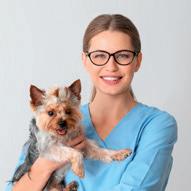
What prompted the change?
We all agreed the benefit of increased mucosal immunity to protect against respiratory disease was worth it!
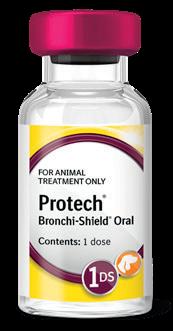
BTW, mucosal vaccines are also strongly recommended by WSAVA for high risk environments such as shelters1

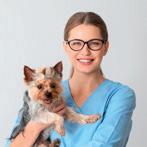



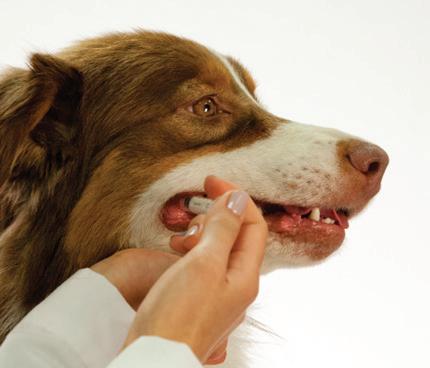
We got the rep in, they sorted out the vaccination protocol and trained our staff. The new protocol worked out to be more cost effective too!




Hmmm...if the flu vaccine came out as an oral mucosal form, how many people would still stick with injections?

Reference: 1. Day, M., et al (2016) WSAVA Guidelines for the vaccination of dogs and cats. J Small Anim Pract, 57(1), E1-E45. 2. BIAH Data on file. Boehringer Ingelheim Animal Health Australia Pty. Ltd. Level 1, 78 Waterloo Road, North Ryde NSW 2113. Toll Free 1800 808 691. ABN 53 071 187 285. Bronchi-Shield® Oral is a registered trademark of Boehringer Ingelheim Vetmedica GmbH – used under license. All rights reserved. BI1547TA-03/20.
Online
now
Yes, we’re using Bronchi-Shield Oral
Dr Claire Adams We considered it but it’s a hassle to change protocols
Dr Claire Adams
Dr Claire Adams
Dr Henry Jones
Dr Henry Jones I hear you guys switched to a mucosal vaccine? Dr
Henry Jones
We’re also not sure if our clients would like it...
Dr Claire Adams
…
Dr Henry Jones
Dr
Henry Jones Simply administer 1 mL of Bronchi-Shield Oral in the buccal cavity for 12 months’ protection against Bordetellabronchiseptica . Protects puppies with a single dose from 8 weeks of age. Over 2 million doses sold in Australia2
The potential of understory production systems to improve laying hen welfare
The welfare of laying hens in cage systems is of increasing concern. Represented by the European Union's 'End the Cage Age' initiative, more and more countries have advocated cage-free farming. China, an important country for poultry farming and consumption in the world, is highly dependent on cage systems and lacks confidence in alternative (e.g., free-range) systems. In this context, using China's abundant woodland resources (including natural forests, plantations, and commercial forests) to facilitate the management of laying hens in a free-range environment may provide highly promising welfare improvement programs. On the basis of the Five Freedoms, we assess the welfare status of understory laying hen management systems with reference to the behavioural needs and preferences of laying hens and the EU standards for free-range and organic production (highest animal welfare standards in the world). The results show that the considered systems meet or even exceed these standards, in terms of key indicators such as outdoor and indoor stocking density, outdoor activity time, and food and drug use. Specifically, the systems provide sufficient organic food for laying hens without using antibiotics. They allow laying hens to avoid beak trimming, as well as to express nesting, foraging, perching, reproductive, dustbathing, and other priority behaviours. The presence of roosters and higher use of woodland space allow the laying hens to achieve better feather and bone conditions, thus reducing stress and fear damage. Notably, the predation problem is not yet considered significant. Second, there is evidence that understory laying hen systems are profitable and have been welcomed and supported by farmers and governments in the southwest, south, and north of China. However, whether it can be scaled up is uncertain, and further research is needed. In addition, laying hens in this management system face various risks, such as foot injury, parasitism, and high dependence on consumer markets, which must be considered. Overall, agro-forestry, or accurately, understory poultry raising, provides opportunities and possibilities for free-range laying hens and welfare improvement in China and other countries.
Shaocong Yan1,Chenyujing Yang1,Lei Zhu1,Yongji Xue1 Animals (Basel).2022 Sep 5;12(17): 2305.doi: 10.3390/ani12172305. 1School of Economics and Management, Beijing Forestry University, Beijing 100083, China.
Free PMC article
Sports ball projectile ocular trauma in dogs
Objective: To describe the clinical features, management, and outcome of dogs presenting with sports ball projectile ocular injuries. Animals studied:Eighteen dogs.
Procedures: Aretrospective study reviewing cases of ocular injury due to a sports ball projectile that presented to the Cornell University ophthalmology service between 2004 and 2021. Dog age, type of sports ball, initial ocular lesions, eye affected, clinical management, and visual outcome wererecorded.
Results: Sports ball projectile ocular injuries were identified in 18 eyes of 18 dogs. The median age of the dogs was 1.0 years old, ranging from 0.3- to 9-years- old. Nine dogs were male, and 9 were female. Ocular injuries were caused by small, dense balls (e.g., golf balls, baseballs) in 11 dogs; small, light balls (e.g., tennis balls, toy balls) in 5 dogs; and large, soft balls (e.g., soccer ball, football) in 2 dogs. Closed-globe injuries (12 of 18 eyes) presented with traumatic uveitis (91 per cent), hyphema (45 per cent), and subconjunctival haemorrhage (18 per cent). All 12 closed-globe injury cases were medically managed, eight dogs remained visual. Open-globe injuries (6 of 18 dogs) presented with three corneal lacerations and three scleral ruptures. Five open-globe injuries required enucleation, and one was medically managed and maintained vision.
Conclusion: Sports ball projectile ocular injuries in dogs can result in substantial ocular morbidity and in loss of vision. Small, dense balls were associated with injuries that carried the most guarded prognosis and required more aggressive management. Small and large lighter projectiles wereassociated with less serious ocular injuries and visual outcomes.
Remington X Chan1,Eric C Ledbetter1
Vet Ophthalmol.2022 Sep;25(5): 338-342.doi: 10.1111/vop.12987.
1Department of Clinical Sciences, College of Veterinary Medicine, Cornell University, Ithaca, New York, USA.
Dairy vs beef production - expert views on welfare of cattle in common food production systems
Consumers' views and concerns about the welfare of farm animals may play an important role in their decision to consume dairy, meat and/or plants as their primary protein source. As animals are killed prematurely in both dairy and beef industries, itis important to quantify and compare welfare compromises in these two sectors before the point of death. Seventy world-leading bovine welfare experts based in 23 countries were asked to evaluate the likelihood of a bovine to experience 12 states of potential welfare concern, inspired by the Welfare Quality protocol. The evaluation focused on the most common beef and dairy production systems in the experts' country and was carried out separately for dairy/beef calves raised for red meat, dairy/beef calves raised for veal, dairy/beef calves raised as a replacement, and for dairy/beef cows. The results show experts rated the overall likelihood of a negative welfare state (i.e. welfare risk) to be higher in animals from dairy herds than from beef herds, for all animal categories, regardless of whether they were used to produce milk, red meat or veal. These findings suggest that consuming food products derived from common dairy production systems (dairy or meat) may be more harmful to the welfare of animals than consuming products derived from common beef production systems (i.e. from animals solely raised for their meat). Raising awareness about the linkage between dairy and meat production, and the toll of milk production on the welfare state of animals in the dairy industry, may encourage a more sustainable and responsible food consumption.
Roi Mandel1,Marc B M Bracke2,Christine J Nicol3, John A Webster4,Lorenz Gygax5 Animal.2022 Sep;16(9): 100622.doi: 10.1016/j. animal.2022.100622.
1Section of Animal Welfare and Disease Control, Department of Veterinary and Animal Sciences, University of Copenhagen, 1870 Frederiksberg C, Denmark; Behavioural Ecology Group, Section for Ecology & Evolution, Department of Biology, University of Copenhagen, 2100 Copenhagen, Denmark.
2Wageningen Livestock Research, Wageningen University and Research, 6708 WD Wageningen, The Netherlands.
3Royal Veterinary College, AL9 7TA Hatfield, United Kingdom.
4Professor Emeritus at the University of Bristol and Former Head of the Bristol Vet School, BS40 5DU Langford, United Kingdom.
5Animal Husbandry & Ethology, Albrecht Daniel Thaer-Institute of Agricultural and Horticultural Sciences, Humboldt-University of Berlin, 10099 Berlin. Germany.
Free article
Although cats and dogs can live amicably,inter-species conflict can result in poor welfare. Species introduction can impact the development of the cat-dog relationship. This study aimed to identify factors associated with owner reported 'only desirable' puppy behaviour (defined as the puppy being uninterested, ignored the cat and/or interacted in a calm way) following introduction to existing household cats, and to explore perceptions of the emerging cat-dog relationship. Owner-reported data collected as partof a longitudinal study of canine health and behaviour were used. Of 4678 puppies, 26.7 per cent lived with at least one cat. Of the 1211 puppies who had been introduced to the household cat at the time of survey completion, playing (58.9 per cent), being overexuberant or over-excited (56.6 per cent), and chasing (48.6 per cent) were the most common behaviours displayed towards cats. 'Only desirable' behaviours were shown by 7.3 per cent of puppies. Multivariable logistic regression showed early (puppies aged <12 weeks), gradual introductions and living in a multi-dog household increased the odds of 'only desirable' behaviours. Qualitative analysis revealed two styles of introductions-owner-led and pet-led. Owners who led introductions anticipated amicable relationships To page 30
■ EDITEDBYJENIHOODBSc(Hons)BVMSPhD
Introducing a puppy to existing household cat(s): mixed method analysis
Abstracts TheVeterinarian OCTOBER 2022 14 ■ www.theveterinarian.com.au
Simon Palmer is the Managing Director of Practice Sale Search, Australia’s largest practice brokerage. If you’d like more information on practice sales or want to have a confidential discussion about your practice’s circumstances, email Simon Palmer atinfo@practice salesearch.com.au or call 1300 282 042.
The fog of raw vet financials
For those of you unfamiliar with vet practice financials, you may be forgiven for thinking that if you’ve seen one, you’ve seen them all. That they all follow a similar structure or template, and that the practice’s income and expenses will always be labelled somewhat consistently from practice to practice. The truth of it is that the structure and quality of vet practice financials can vary enormously.
■ Vet practice structures sometimes utilise service entities which change how the financials should be interpreted.
■ Expenses that buyers/banks often want to see separately are sometimes lumped together.
■ Expenses are sometimes put into non-specific/non-descript expense categories, which are a shorthand that makes sense to the person doing it, but not to outsiders.
■ Personal expenses may be mixed into the financials, diluting the profit of the practice (personal insurances mixed in with practice insurances, personal mobile phone and travel mixed in with those of the business).
■ Many non-recurring expenses may be mixed into the financials, diluting the profit (one-off repairs, signage, website creation, etc.).
■ The owner may not be paying themselves market-rate rent, or a market-rate salary
■ Sometimes, other financial interests may be going through the same financial entity (investment property, other practices or businesses run out of the same ABN).
When we are involved as vet brokers, it is our job to work with the vendors and their accountants to provide clear financial statements to a prospective purchaser that best represent the practice and facilitate the sale. But how can you navigate a practice’s financials when this isn’tthe case?
As a potential buyer
If you are assessing practice financials that are not clear,it is almost always a mistake to become suspicious or upset. The seller has almost certainly not deliberately created a ‘fog’ to misrepresent the practice. Realise that:
1. When an owner shows a buyer their financials, it is often the first time they have shown them to a nyone outside their innermost circle. There are feelings of exposure, sensitivity and sometimes embarrassment that come with this exposure. Be sensitive to this and don’t criticise the quality of the information provided.
2. Sometimes, it is the inexperience of the buyer’s accountant with vet practice accounting that is causing the issue.
3. A vet practice owner sometimes puts their head down to focus on practice operations and delegates and/or abdicates responsibility for the financial documents to their
bookkeeper/accountant, who is allocating expenses, with little oversight and direction.
4. It is not uncommon for raw practice financials to need clarification and expense add-backs, in order to be able to see the true profit. You can’t always take financialson face value. They often need somebody with experienceto help interpret them and you will possibly need to ask for more info from the seller.
While some owners are intimately aware of all of their practice’s figures, don’t put them on the spot with questions when you meet them, point to an expense line on a Profit and Loss that seems strange, and expect them to have answers. Politely email any questions or necessary clarifications afterwards.
As a Practice Owner: Often, for the sake of expediency, a practice owner will send out their raw financials to a prospective buyer to progress a deal, without realising that:
-Buyers are often inexperienced with financials and may have questions and need clarifications. Don’t take their questions as a lack of confidence or a suggestion that the financials lack integrity.
-How they name expenses and structure their financials is not how everyone does it.
-AProfit and Loss report often shows a lack of profit for tax purposes, and this can lead an inexperienced buyer to believe there is a lack of profit, where profit actually exists in abundance.
-A lack of clarity can lead to a lack of confidence. A seller should take the time to list the items in the financials that are non-business or non-recurring and be preparedto spend time answering further questions on the financialsas that way they probably will get a better price.
-Sometimes, a buyer will be too embarrassed to ask questions when they don’t understand financials and will just give up.
Before you put your practice on the market, make sure that you take the time to ensure that your financials are up to date, clear and that you can account for all add backs. If you aren’t sure, send them to a practice broker or valuer for their opinion. While spending this time and expense may be frustrating and might slow things down initially, it will be worth it when your buyers are able to see the true value of what you have built.
TheVeterinarian 15 OCTOBER 2022 ■ www.theveterinarian.com.au Management
VETERINARY DENTAL X-RAY
Digital dental X-Ray is critical for diagnosing underlying pathology hidden below the gum line. iM3 offers a range of superior high resolution digital scanners and dental radiology systems designed for veterinarians.

VETERINARY DENTAL UNITS
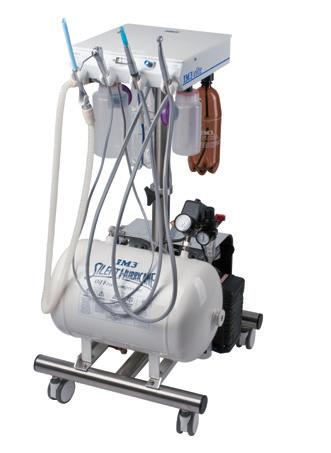

iM3 mobile dental systems feature oil-free compressor technology to greatly reduce maintenance. Coupled with quality components, a 5 year warranty and iM3 support these units provide many years of trouble free service.
ULTRASONIC SCALER



Ultrasonic scalers are used to rapidly remove plaque and calculus from the tooth surface. iM3 offers a complete range of Ultrasonic scalers from Piezo’s with and without LED light and the industry leading 42-12.

ACCESSORIES & CONSUMABLES
iM3 offers a complete range of veterinary specific dental accessories and consumables from Prophy paste and cups to CLS solution and long diamond burs for rabbit and rodent dentistry.
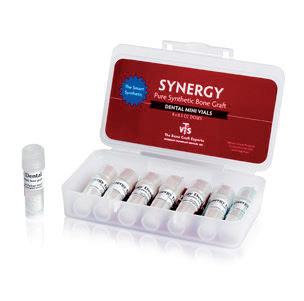
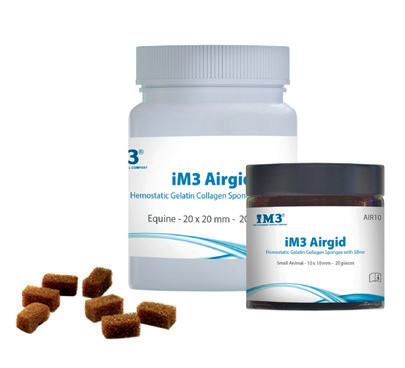
Pure Synthetic bone graft
Synergy is an advanced biosynthetic bone graft comprised of calcium phosphates that occur naturally in real bone. These intelligent bioactive materials have the ability to stimulate bone formation.

SHONA DENTAL TABLE
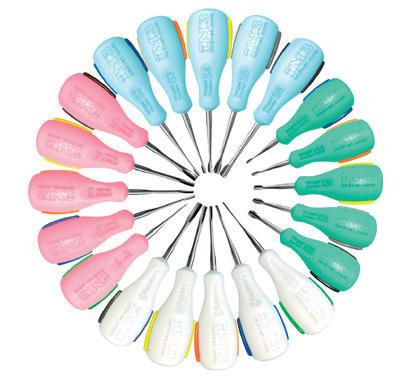
The new stainless steel dental table that requires no plumbing, is ergonomically designed, height adjustable at the touch of a button, and can double as an extra consult table.

AIRGID GELATINE SPONGE
Airgid is a gelatine sponge for the prophylaxis of wound infections and secondary bleeding after extractions. Airgid contains colloidal silver which leads to a broad antibacterial effect over the entire absorption time.
HOME CARE
Oxyfresh is a tasteless and odourless Water Additive and Dental Gel designed to help support pet dental health and fight periodontal disease. Now available in new sizes!
iM3 Ergo Range NEW Extra Small luxators now available!
The range of Ergo dental instruments feature an innovative handle design providing comfort coupled with soft silicon inserts to provide added grip during use. The highquality stainless steel instruments, with sharp cutting edges, are lightweight yet durable.
The Ergo range includes Winged Elevators, Straight Elevators and Luxators all with colour coded handles to identify the type of instruments and colour coded silicon strips to identify the size of the instrument in mm. Each size is available in a 5 piece set, that comes with and autoclavable cassette.
ACCESSORIES & CONSUMABLES
Pty Ltd The Veterinary Dental Company | www.im3vet.com.au | 02
5766 | sales@im3vet.com.au DENTAL UNITS | X-RAY | ULTRASONIC SCALERS | HAND
|
iM3
9420
INSTRUMENTS
QUALITY DENTAL
DESIGNED AND BUILT BY THE GLOBAL NAME IN VETERINARY DENTISTRY FOR MORE THAN 30 YEARS
PRODUCTS
FASM graduated from the University of Sydney in 1981. He is a specialist in small animal internal medicine and has aspecial interest in infectious diseases of dogs and cats. Although active in clinical research through postgraduate scholars, he is semi-retired, living in the southern Highlands of NSW on abrumby sanctuary. Hehelps out at a few practices including Southern Tablelands Veterinary Hospital, Double Bay Vet Clinic and Paddington Cat Hospital. He also works for the Centre for Veterinary Education helping to organise CPD.
Richard can be contacted by email at richard.malik@ sydney.edu.au
Akey role for molnupiravir in the management of cats with FIP in Australia
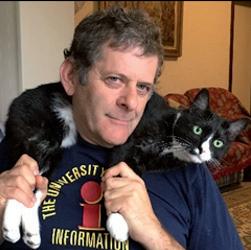
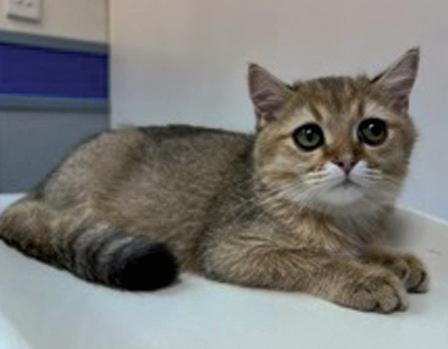
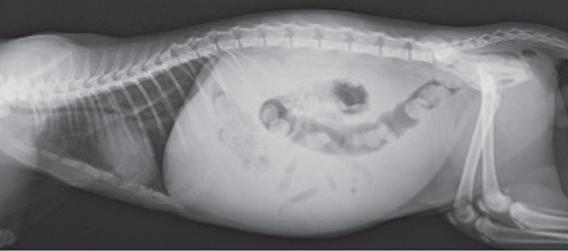
Introduction: What is the status quo?
All readers of The Veterinarian will be familiar with the standard protocol for the treatment of FIP in Australia. This entails the use of the RNA polymerase inhibitors remdesivir (IV or SCI) and GS-441524 (tablets), in conjunction with the repurposed anti-malarial medication, mefloquine (compounded capsules or Larium tablets). These three drugs represent the current therapeutic options available for the treatment of FIP in Australia. The specific details and treatment regimens will vary from cat to cat. This will depend upon case specific clinical signs (higher doses for ocular and CNS disease), the bias of the treating clinician and the financial resources of the owner.
Remdesivir has the advantage of being suitable for both intravenous and subcutaneous therapy. As the COVID 19 pandemic transitions to a continuously transmitted endemic infection, the cost of remdesivir will decrease, enabling it to also be used as an oral preparation. Compounded oral remdesivir is already in routine use in New Zealand, and is inexpensive. Intravenous or subcutaneous remdesivir is especially helpful in cases of FIP with advanced disease, or where abdominal disease is so extensive there are concerns regarding the bioavailability of GS-441524. My understanding is that polyprenyl immunostimulant is no longer in use, despite the recent paper from the Edinburgh group showing some efficacy.1

Some clinicians and clients will prefer to bypass remdesivir completely and instead initiate treatment with GS-441524 tablets. GS-441454 tablets are cheaper than remdesivir, and this approach may eliminate the need for hospitalisation.
There is some debate as to the optimum duration of treatment for injectable remdesivir prior to the initiation of oral GS-441524 treatment. Initially we recommended two weeks of parenteral therapy.However,colleagues at the Royal Veterinary College administer remdesivir IV for 4-5 days before changing to oral GS-441524 therapy, with satisfactory results.
high cost of GS-441524 therapy. There is some debate about the best dosing regimen for this repurposed antimalarial drug. The initial work suggested 1/4 of a 250 mg Larium tablet (62.5 mg) given twice a week. Despite the additional costs associated with compounding 250mg tablets to a smaller dosage, I prefer to use 20 to 25 mg per cat orally once daily with food. Ioften start cats on this small daily dose as they approach the end of a course of GS-441524 therapy, and then continue mefloquine for several months in order to facilitate the eradication of any residual FIP virus which may be sequestered within cells of the mononuclear phagocytic system.
Regimens based on these drugs will usually result in the successful treatment of kittens and cats with FIP, although the occasional case can be incredibly challenging. Such clinical scenarios may involve the presence of CNS disease with seizures, or the development of viral resistance during thecourse of therapy.
From the outset, the costs associated with treatment are beyond the financial resources of many owners. If the FIP virus develops mutational resistance during the course of therapy, the requirement for increased drug doses, often for prolonged periods, makes treatment more financially and emotionally challenging. This is problematic, even for the most devoted owner.
One way to circumvent the high cost of therapy is to use ‘black market’ GS-441524. This is widely available from many foreign suppliers. Although this is not legal, it is widely sourced by owners and especially by cat breeders. Many cats have been saved by these drugs.2 The problem is that we are uncertain of the actual dosage of the active ingredient available in different preparations of foreign-sourced medications. Testing in Australia has shown that the actual dose may be higher or lower than the value quoted by the manufacturer. This difference may be substantial, so you just cannot be confident of the dosage cited on the product packaging. Furthermore, we have no feel for batch-to-batch variation of the black-market drugs.
Most Australian veterinarians encourage clients to use legal products provided by BOVA Australia as the supply chain is robust and reliable. Regular quality control testing ensures that each tablet contains 50 mg of GS-4415624, as labelled.
Mefloquine is a useful drug which can be used in combination with GS-441524. It can also be given when acat is stabilised, but not yet cured, if owners can no longer afford the
The existing drugs are awfully expensive. This is especially an issue when treating adult cats (which weigh more), or when CNS disease is present. CNS involvement necessitates the use of higher doses on a mg/kg basis to ensure therapeutic concentrations are obtained within the brain, spinal cord, and CSF. In addition to the costs associated with initiating treatment, further expense is involved due to the need for ongoing veterinary consultations. Repeat pathology tests in addition to imaging in certain clinical scenarios are also required to monitor the progress of therapy.
The COVID 19 pandemic has resulted in extensive research into prevention and treatment of Coronavirus disease. In Australia, two oral treatments are now widely available for human patients infected by SARS-CoV-2, viz. molnupiravir and Paxlovid.3 Molnupiravir is an oral prodrug of the nucleoside analogue β-D-N4-hydroxycytidine (EIDD-1931). In coronaviruses, it causes guanine to adenine and cytosine to uracil nucleotide translation mutations. This leads to further mutations in downstream copies of the virus. As a result, the virus cannot survive, due to an effect called ‘viral error catastrophe’ or ‘lethal mutagenesis.’ Molnupiravir has been found to be safe and well tolerated at a dose of up to 800mg twice daily in COVID-19 patients.
Professor Niels Pedersen provided a summary of the history of the evolution of molnupiravir on his SOC FIP website. I have attached some of that
Richard Malik DVSc MVetClinStud PhD
Clinical Review TheVeterinarian 17 OCTOBER2022 ■ www.theveterinarian.com.au
Figure 1. A British short haired cat from Hong Kong with wet (effusive) FIP. Picture Dr Chris Simpson
Figure 3. Whole cat radiograph of the patient in Figure 1 with wet FIP
Figure 2. High protein, strawcoloured fluid from the abdomen of the cat in Figure 1
HEALTH Y S KI N COM ES FROM WITHI N
The ROYAL CANIN ® Skin Support diet is scientifically formulated to help assist dogs suffering from atopy and skin disease.
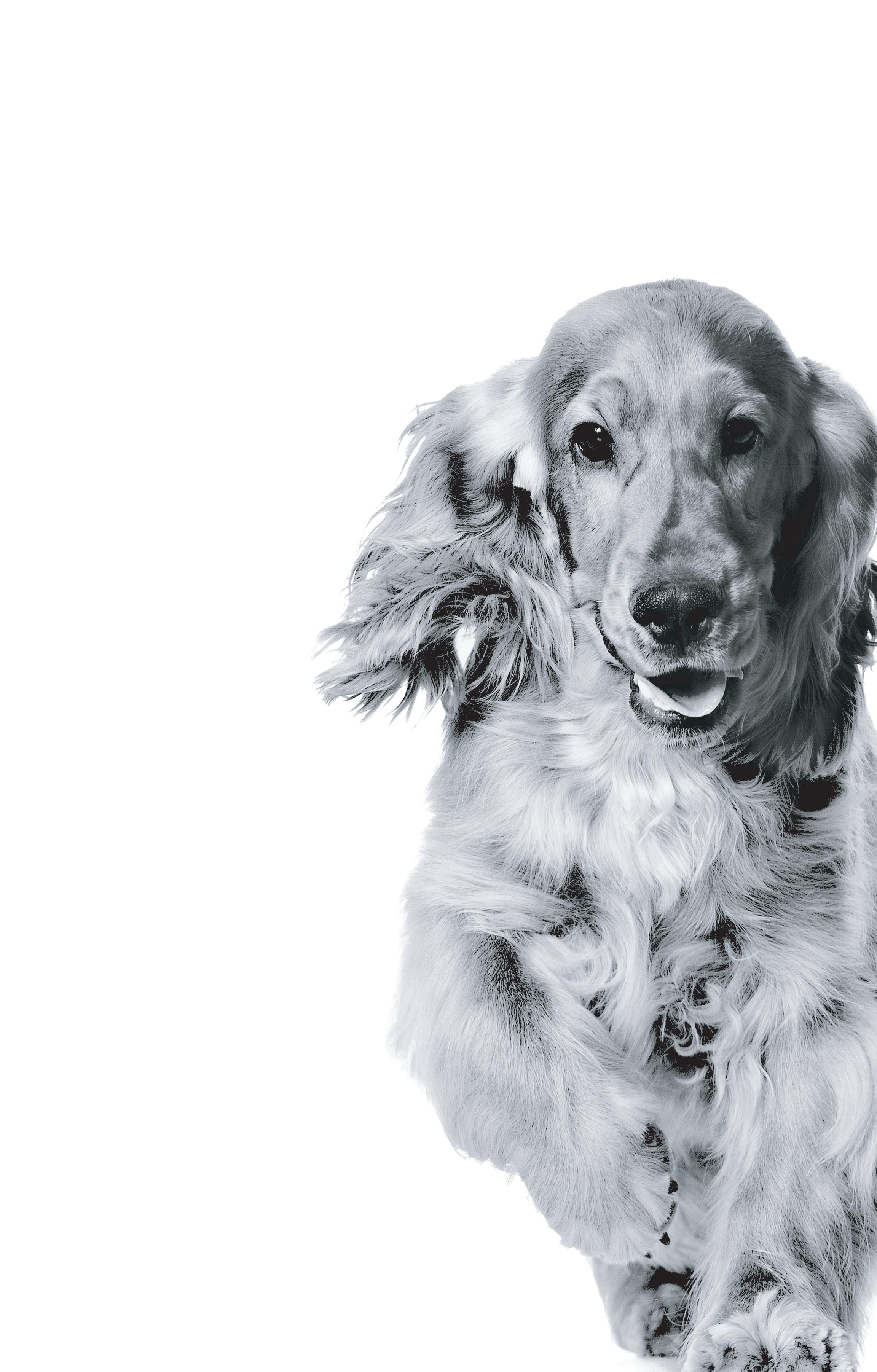
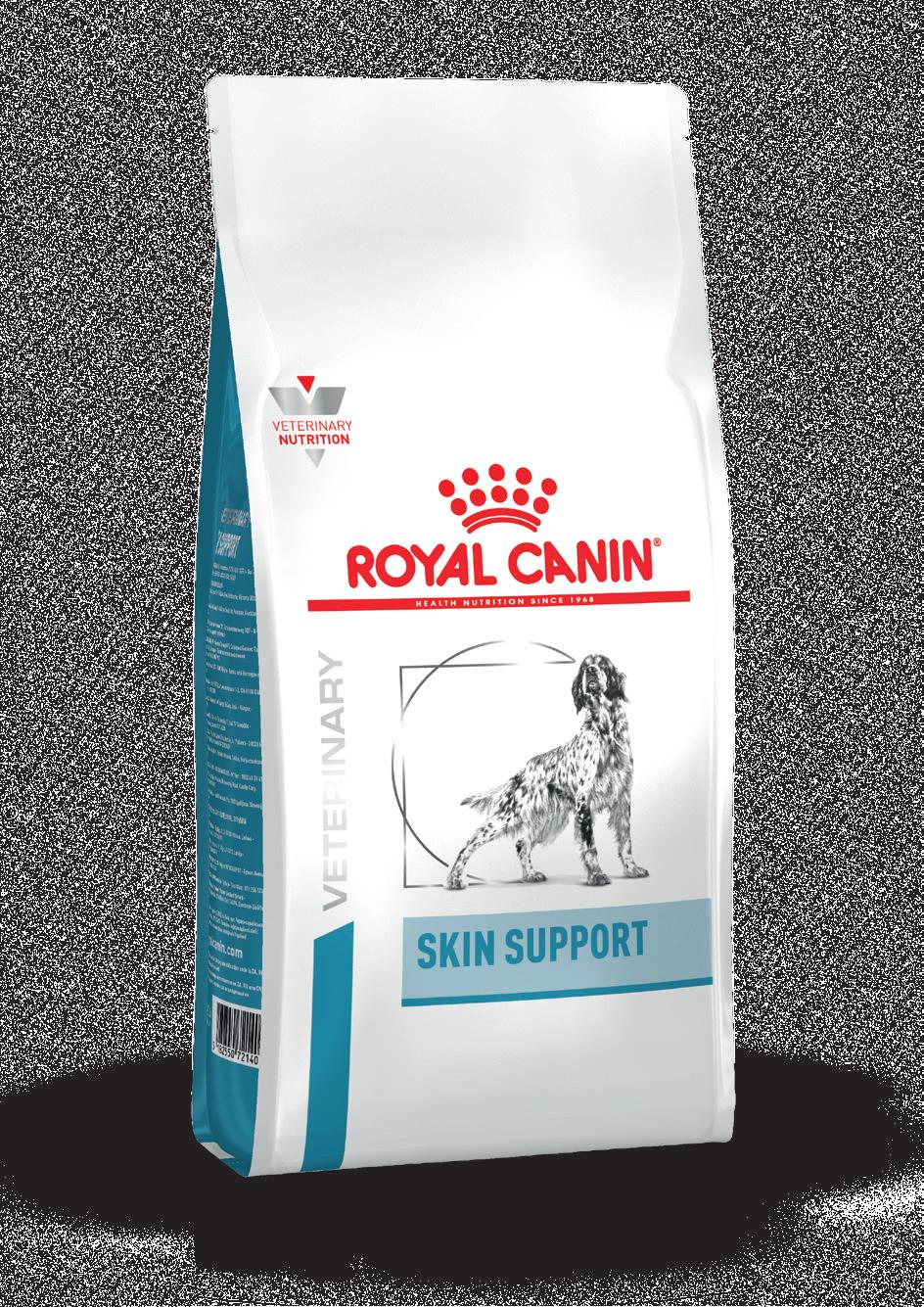
Scan here to discover our online scientific and medical journal library

FOR MORE INFORMATION PLEASE CONTACT YOUR ROYAL
® REPRESENTATIVE
CANIN
to this monograph, below with some modifications:
Molnupiravir has recently been tested in cats with FIP by at least one Chinese distributor of GS-441524, and preliminary results reported on the FIP Warriors CZ/SK website. Molnuparivir is sold under the brand name HERO Plus 2801. The field trial consisted of 286 cats with various forms of naturally occurring FIP seen in pet clinics in US, UK, Italy, Germany, France, Japan, Romania, Turkey, and China. No deaths occurred among the 286 cats that participated in the trial. This included seven cats with ocular (n=2) and neurological (n=5) FIP. Twenty-eight of these cats were cured after 4-6 weeks of treatment and 258 after 8 weeks. All treated cats remained healthy 3-5 months later, a period during which relapses would be expected in cats not successfully treated.

This data provides compelling evidence for the safety and efficacy of molnupiravir for cats with various forms of FIP. It is hoped that this field trial will be written in manuscript form, submitted for peer review, and published. Nevertheless, molnupiravir is now being sold to owners of cats with FIP. At least one other major seller of GS-441524 is also interested in using molnupiravir for FIP, with the product Aura 2801 attracting the most interest. This clearly demonstrates an unmet demand for additional antiviral drugs for use in cats with FIP.
Asafe and effective dosage for molnupiravir in cats with FIP has not yet been published. However, one distributor from China has providedsome pharmacokinetic and field-testing data on molnuparivir in cats with naturally occurring FIP. This is contained in an advertising flier for Hero-2081. This data describes that 28/286 cases received this medicine at a dose of 30-40 mg/kg every 24 hours i.e. equivalent to 15-20 mg/kg every 12 hours. For the purpose of comparison, the current recommended human dose is 800 mg every 12 hours, or approx. 10 mg/kg bid. This is consistent with the doses of molnupiravir used in ferrets, where 5-15 mg/kg was used safely and successfully in the prevention and treatment of experimentally induced COVID.
Dose recommendations seem to vary: Initially, the following doses were suggested:
■ Dry/Wet FIP: 25mg/kg orally q24h
■ Ocular FIP: 37.5mg/kg orally q24h
■ Neurological FIP: 50mg/kg orally q24h
This was later modified after input from Niels Pedersen and the Davis group, based on presumptions from published information:
■ Wet / Dry FIP: approx. 5-7 mg/kg q12h for 84 days.
■ Ocular FIP: 8-10 mg / kg q12h for 84 days.
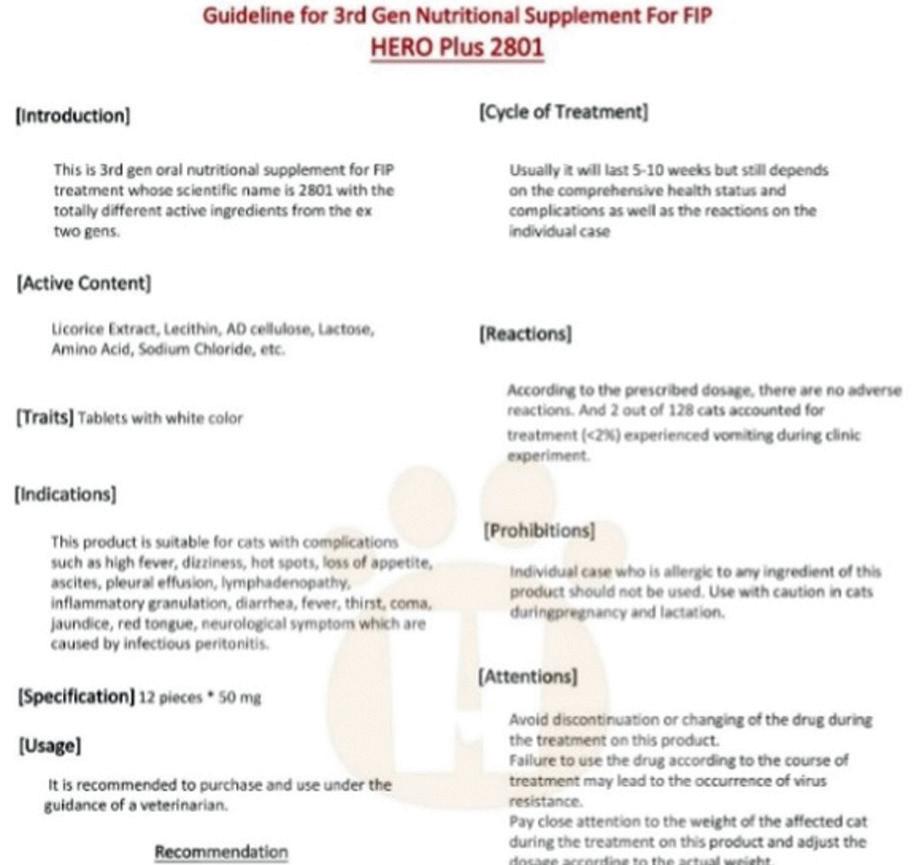
■ Neurological FIP: 10-15 mg/kg q12h for 84 days.
The duration of the course of treatment was for 5-10 weeks and was informed by the severity of the disease in addition to particular case specific factors.
Dr Samantha Evans’ group from Ohio conducted an internet-based survey on the use of unlicensed molnupiravir as first line therapy for suspected FIP and as a rescue therapy for cats with persistent or relapsed clinical signs of FIP following GS-441524 and/or GC376 therapy. This data was presented at the recent ISCAID meeting in Glasgow. Using owner reported data, treatment protocols for 30 cats were documented.
The 26 cats treated with molnupiravir as a rescue therapy were given an average starting dosage of 12.8 mg/kg and average final dosage of 14.7mg/kg twice daily for an average of 13 weeks. A total of 24/26 cats were still living disease-free at the time of writing. One cat was euthanized after completing treatment due to a prolonged seizure and the other cat underwent re-treatment for relapsed clinical signs. Few adverse effects were reported. Those reported included folded ears (1), broken whiskers (1), and severe leukopenia (1) – seen at doses above 23 mg/kg twice daily.
Thus far in feline clinical practice, I have been using licensed human grade molnupiravir manufactured in India (purchased online and imported) at a dose rate of 10-15 mg/kg twice daily (see below).
Adifferent product, Paxlovid, is a combination of two drugs (nirmatrelvir and ritonavir) within a single preparation. One drug inhibits the metabolism of the other drug. I can find no precedence for its use in cats, even though it is widely available and inexpensive when purchased online. Paxlovid has proven to be the more efficacious of the two available oral treatments for COVID 19 when used in human populations. However, the use of paxlovid has been associated with more side effects and many potential drug interactions. In Australia, Paxlovid is approximately the same cost as molnupiravir. When purchased from websites in India, Paxlovid is consistently more expensive than molnupiravir. Should Paxlovid demonstrate adequate safety when used in feline populations, it may prove to be an extremely useful drug for treating FIP in cats. In people, one reported side effect is an unpalatable aftertaste, so called ‘paxlovid mouth.’ This would be problematic should it occur in cats, because of their propensity to froth saliva.
Figure 5.
Warriors CZ/SK - EIDD-2801 (Molnupiravir) www.fipwarriors.eu/en/eidd-2801-molnupiravir/
There is an on-going clinical investigation at UC Davis which involves Brian Murphy and Krystal Regan. This study commenced in July 2022 and aims to establish the optimal dose rate and dosing interval for the use of molnupiravir in feline populations with FIP,including relevant population pharmacokinetic data.
Niels Pedersen believes it is doubtful that molnupiravir will prove safer or more effective than GS-441524 for the treatment of FIP. However, a third antiviral drug may prove extremely helpful in preventing GS-441524 resistance. In particular, this would be the case if molnupiravir could be utilised as one component within a cocktail of antivirals with different resistance profiles. As identified in Sam Evans’ survey, molnupiravir could also be used in the treatment of cats that no longer respond well to GS-441524.
It remains unknown whether molnupiravir will be free from long-term side effects.
As previously outlined, the recommended doses of molnupiravir used in early trials seemed to be excessive. And to make matters more problematic, no study has examined whether the two different unlicensed molnupiravir products, Hero and Aura, actually have the stated amount of active drug in each tablet!
What then is the place of molnupiravir in therapy of kittens and cats with FIP? How do you get it? How much does it cost? Anyone can buy molnupiravir in Australia for their own use, or for use in their cat(s), by obtaining a prescription from a doctor or veterinarian (respectively) and presenting it to a pharmacy.The trade name is Lagevrio (Merck Sharp & Dohme), and a box contains 40 200 mg capsules. The drug was provisionally approved by the TGA in February2022 for the treatment of COVID-19 in adults who do not require oxygen supplementation and who are at risk of progressing to severe COVID-19. For those who qualify for subsidisation under the PBS, the cost is $45.
The cost of molnuparivir for people who do not qualify for special access, and for cats, is about $1,101.39, depending on the pharmacy mark-up. See: www.pbs.gov.au/medicine/item/12910L
The treatment of a 4 kg cat at 10-15 mg/kg bid requires 80 mg to 120 mg of molnupiravir per day for 84 days. This equates to a cumulative dose of 6,720 to 10,080 mg. A box of 40 x 200 mg capsules represents 8,000 mg. The cost of initially procuring the molnupiravir, in addition to charges associated with compounding the medication to the correct strength for a cat translate to an overall cost of approximately $1200 dollars. This is appreciably cheaper than GS-441524 or remdesivir. Thus, we now have an alternative therapy for the management of FIP in feline populations. This is achieved by obtaining a prescription, visiting a compounding chemist, and having capsules made up to 40-50 mg strength, (more if CNS involvement is present).
What is the evidence supporting the use of molnuparivir in FIP? Are the pharmacokinetics well understood in cats? At this point in time, we are not certain as the evidence has not been subjected to peer review. Our understanding from discussions at the ISCAID meeting is that

TheVeterinarian 19 OCTOBER 2022 ■ www.theveterinarian.com.au Clinical Review
Figure 4. Chemical structure of molnupiravir, EIDD-1931 and the active triphosphate intracellular moiety
First page of the data provided in the package insert about ‘Hero 2018’ from FIP
Figure 6. Anterior uveitis in a cat with FIP. Note the fibrin clot in the anterior chamber
Brian Murphy’s group will soon publish pharmacokinetic data. However compelling anecdotal unpublished information suggests molnupiravir isan effective and safe therapy. Furthermore, robust population pharmacokinetic data is likely to be available within a year from the Davis group.
In summary, molnupiravir appears to be a highly effective treatment for FIP, comparable to remdesivir/GS-441524, and perhaps with less propensity for viral resistance to develop during acourse of therapy. It can be purchased from any pharmacy and compounded to an appropriate strength for kittens and cats, and an 84-day course of therapy should cost approximately $1200 AU.
from foreign sources for use in human populations can indeed be translated to the treatment of cats with FIP in Australia. The veterinarian’s oath that recent graduates have taken would support this contention.
So, how can a client order molnupiravir from India to treat their cat with FIP? Go online and find the URL for a website called IndiaMART viz. www.indiamart.com and search for Molcovir 200mg – currently the URL is:
m.indiamart.com/isearch.php?s=Molcovir+200 mg&prdsrc=1&countryiso=AU&qucx=1&stype= attr=1
After submitting your contact details and identifying which medication you are interested in purchasing, your enquiry is forwarded to several pharmacies requesting quotes. We suggest you correspond by e-mail and avoid the numerous text messages that will be sent to your mobile phone. The manufacturers with whom we have had the most experience are Dolphin Pharmaceuticals and Mediseller. One of these accepts PayPal payment rather than requiring credit card payment. The responsibility of negotiating customs rests with the Australian purchaser. The suppliers do their best to ensure that the medication is labelled so that it is clear that it is not an illicit drug. You cannot purchase any medication until a quote comes back. A screen shot of the correspondence from the company is shown below (Figure 7).
The answer to this question is not as clear-cut as one might think. Remdesivir and GS-441524 have demonstrated efficacy as treatments for FIP in kittens and cats. These two treatments currently represent the standard of care for companion animal clinicians in Australia. We are also comfortable with low dose daily mefloquine asan adjunctive drug to consolidate therapy. However, most of us who have assisted in the treatment of cats will know of cases where the FIP virus acquired mutational resistance during therapy. This can often be circumvented by escalating the doses of GS-441524 administered. However, for many owners, the cost of this dose escalation becomes prohibitive.
Now it gets a bit tricky!
Australia has a scheme that allows the importation of drugs from overseas for personal use and for the use of one’s family members. Human patients who are prescribed expensive ‘off-label’ medicines that are not eligible for subsidisation under the PBS need to find ways to access these drugs themselves. It is not known how many Australians import medicines, but it is legal under the Personal Importation Scheme. Perhaps the best example is the “FixHepC Buyers Club” (fixhepc.com) established by the Australian physicians Drs John and James Freeman.5 Before the new hepatitis C antivirals were subsidised by the PBS, thousands of Australians used this ‘buyers club’ to import affordable hepatitis C medicines at 1–2 per cent of the retail price. This initiative was supported by the Australasian Society for HIV, Viral Hepatitis and Sexual Health Medicine. Many Australian physicians directed patients to purchase their medicines in this manner.They paid between $1000 to $2000 each to access treatment, rather than the $84,000 charged in America by Gilead Sciences. Although still expensive, for many this was affordable.
This strategy does, however, come with some risk. The internet marketplace for medicines is poorly regulated as it operates between jurisdictional boundaries. Substandard products are not uncommon. By some accounts, up to 25% of medicines formulated in lower income countries are substandard. The greatest risk is that they contain an insufficient amount of an active ingredient, leading to unintentional undertreatment. This is a complex space for doctors (and veterinarians!) to navigate, both clinically and medico-legally.How far a clinician’sduty of care extends is unclear. The current code of medical conduct states that proper medical practice includes ‘upholding the patient’s right to gain access to the necessarylevel of healthcare and, whenever possible, helping them to do so.’
There is no reason for believing this principle would not apply in veterinar y practice and extend to helping owners import medicines they otherwise could not afford if it is clearly in the interest of their patients.
My view is that the historical precedent related to the procurement of hepatitis C medication
Once you accept the quote, payment is arranged, then postage. It is our experience that most importations are completely successful, although occasionally the parcel is opened, and acapsule sampled (presumably for testing by customs). Currently,if you buy five boxes, the cost is approximately $30 US ($42 Australian dollars) per box, plus $65 US dollars postage.
The cost of treating a 4kg cat with CNS FIP at 10-15 mg/kg bid for 84 days is likely to be inthe order of $100 to $150 Australian dollars.
The cost of treating the same cat with remdesivir/GS-441524 is typically $6550, representing just the cost of the drugs.
A practical consideration remains: how to procure the molnupiravir in a timely manner. When purchasing from the IndiaMART website, it takes approximately 3 weeks for the drug to arrive in Australia and be processed through customs. One way forward would be to start treatment using remdesivir and/or GS-441524, and then swap to molnupiravir as soon as the drug arrives.
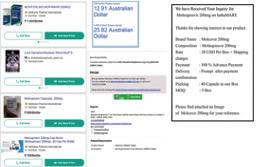

The alternative is to develop a ‘FIP owners buyers’ club.’ This could potentially serve as a source of molnupiravir until the client can arrange importation of their own supply. In the meantime, just send me an e-mail and I should be able to get some molnupiravir to you within aweek or so.
Tounderpin this initiative, we would need to undertake assays on the purity of molnupiravir sourced from these manufacturers in India.
The routine use of combination therapy of FIP cases using GS-441524 and molnupiravir has much to recommend it as a concept. To date, no series of such cases has been published. It is indeed possible that combination therapy might be more rapidly effective by simultaneously targeting two distinct viral sites. Evidence for this approach has been demonstrated in trials where the protease inhibitor GC-376 has been given in concert with GS-441524. This approach may result in shorter courses of therapy.The protocol of 84 days of therapy comes from Neil’s Pedersen’s original seminal paper in JFMS and may be informed by knowledge regarding the lifespan of macrophages within the tissues. This is estimated at to be some 84 days. Therefore, in order to eliminate all of the intracellular virus within the mononuclear phagocyte system, we need to extend treatment beyond the 84-day lifespan of a macrophage.
For many clients, the high cost of therapy can be prohibitive. I suggest that this problem may be circumvented for many clients, by utilising foreign-sourced molnupiravir which may be obtained at a cost of less than $100 AU.
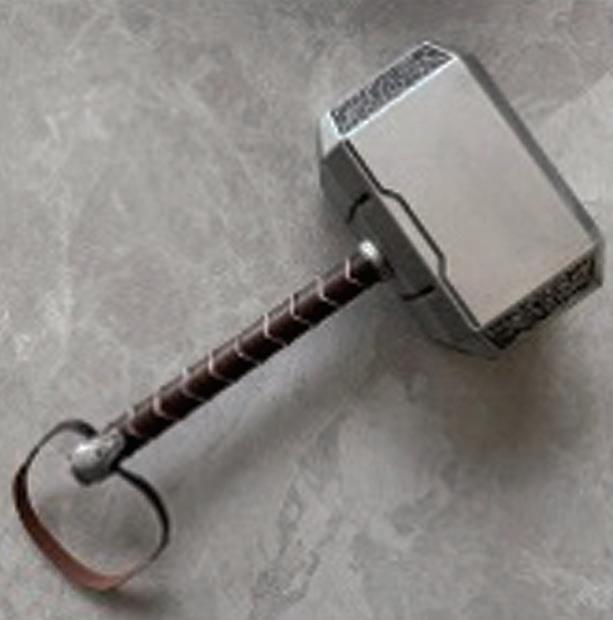
Our colleagues in New Zealand have been equally imaginative in sourcing remdesivir inexpensively from India. This has been organised by a local compounder.The remdesivir is apparently now much cheaper, as demand for treating human cases has lessened. Remdesivir is typically used orally at high doses (25 mg/kg), with an 84-day course of therapy reported to cost $130 NZ dollars.
Is thereadownside to molnupiravir? Currently, it is unknown whether molnupiravir will be free from long term toxicities. Some toxicity,such as bone marrow suppression, may be seen at dosages of 20 mg/kg and above, so these high dosages are not recommended in the treatment of FIP. The active ingredient in molnupiravir, N4-hydroxycytidine, is an extremely potent mutagen. The course of treatment for FIP extends far beyond the five-day course recommended to treat COVID 19 in human patients. Therefore, the theoretical chance of side-effects is greater This risk is however completely theoretical, as long we utilise doses less than 15 mg/kg twice daily. However, it is something we need to monitor in the patients we treat, remaining mindful of the possibility of
What is the best way to treat a cat with FIP in 2022 in Australia?
Clinical Review TheVeterinarian OCTOBER 2022 20 ■ www.theveterinarian.com.au
cancer developing in some cases in the future.
Figure 7. Screenshot of correspondence with manufactures of Molcovir 200mg
Figure 8. Generic molnupiravir (Molcovir 200mg capsules) purchased from IndiaMART and imported in Australia, after clearing customs
For pub trivia and Marvel fans: The nonproprietary name of the drug molnupiravir was inspired by that of Thor’s hammer, Mjolnir!
Key resources about the personal importation scheme which underpins this article:
■ insightplus.mja.com.au/2022/28/importingmedicines-from-overseas-guidance-needed/ ■ www.tga.gov.au/products/unapproved-thera peutic-goods/personal-importation-scheme
References
1. Èerná, P.; Ayoob, A.; Baylor, C.; Champagne, E.; Hazanow, S.; Heidel, R.E.; Wirth, K.; Legendre, A.M.; Gunn-Moore, D.A. Retrospective Survival Analysis of Cats with Feline Infectious Peritonitis Treated with Polyprenyl Immunostimulant That Survived over 365 Days. Pathogens 2022,11, 881. doi.org/10.3390/pathogens11080881.
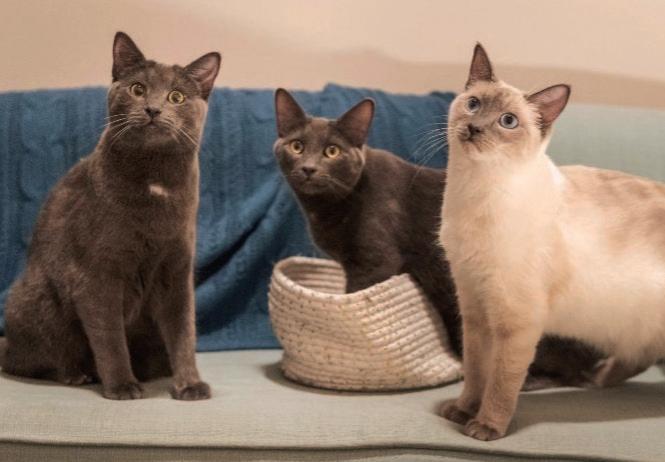
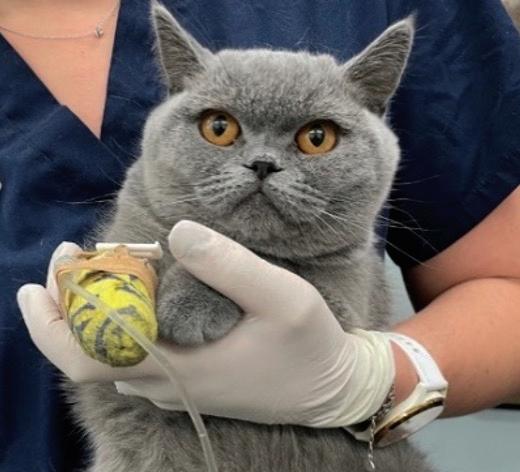
2. Jones, S.; Novicoff, W.; Nadeau, J.; Evans, S. Unlicensed GS-441524-Like Antiviral Therapy Can Be Effective for at-Home Treatment of
Feline Infectious Peritonitis. A nimals 2021, 11,2257. doi.org/10.3390/ani11082257
3. Atmar RL, Finch N. New Perspectives on Antimicrobial Agents: Molnupiravir and Nirmatrelvir/Ritonavir for Treatment of COVID19. Antimicrob Agents Chemother. 2022 Aug 16;66(8):e0240421. doi: 10.1128/aac.02404-21. Epub 2022 Jul 12. PMID: 35862759; PMCID: PMC9380556.
4. https://ccah.vetmed.ucdavis.edu › files ›
inline-files (this is a fantastic review of this subject, highly recommended for people who are interested in drug development and action.)
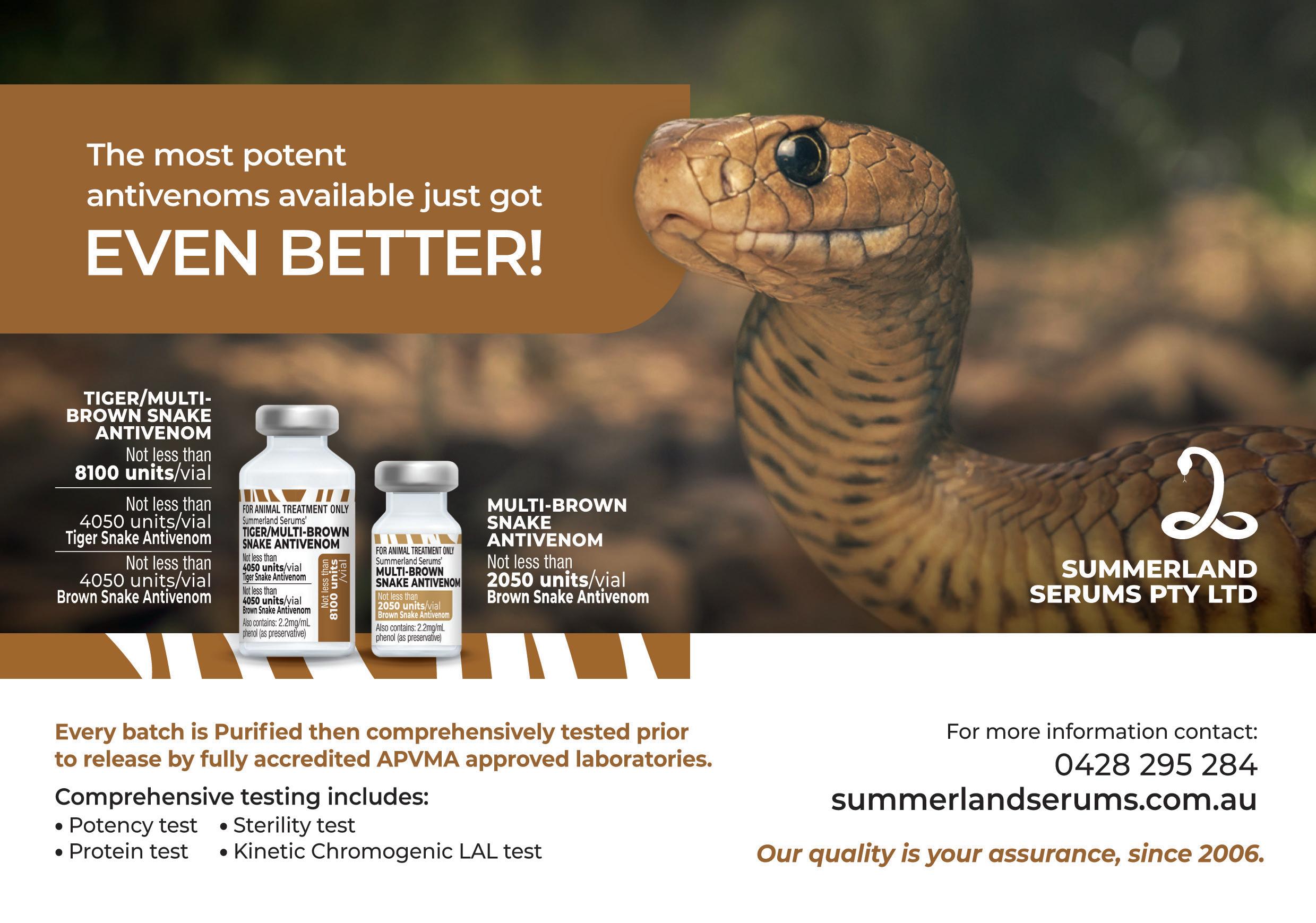
5.www.smh.com.au/healthcare/fixhepc-thebuyers-club-for-hepatitis-c-drug-inundated-withinquiries-20151002-gjzud9.html
6. insightplus.mja.com.au/2022/28/importingmedicines-from-overseas-guidance-needed/ 7. www.tga.gov.au/products/unapproved-thera peutic-goods/personal-importation-scheme
TheVeterinarian 21 OCTOBER 2022 ■ www.theveterinarian.com.au Clinical Review
Figure 9. A British short hair with FIP getting IV remdesivir at initial therapy
Figure 10. One of these cats had FIP. Can you guess which one?
Dr Jane Miller Veterinarian Victoria
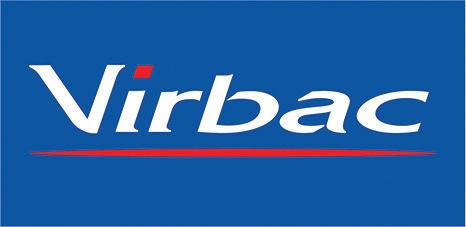
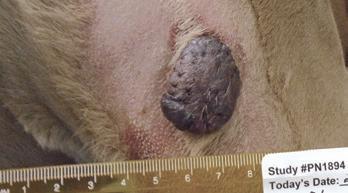
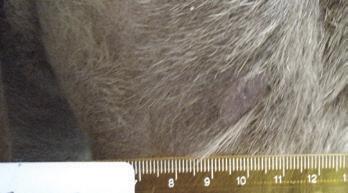
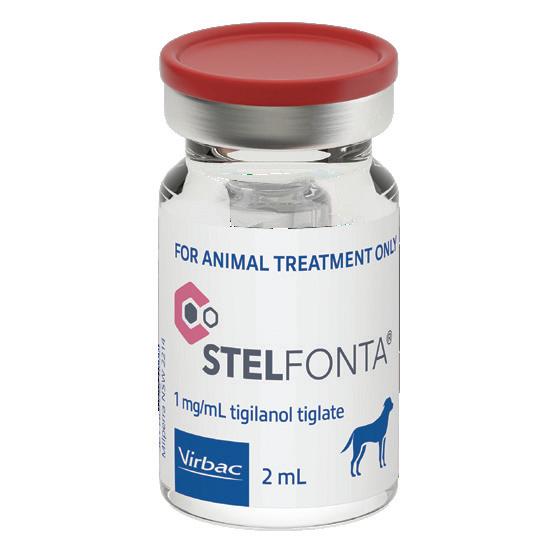
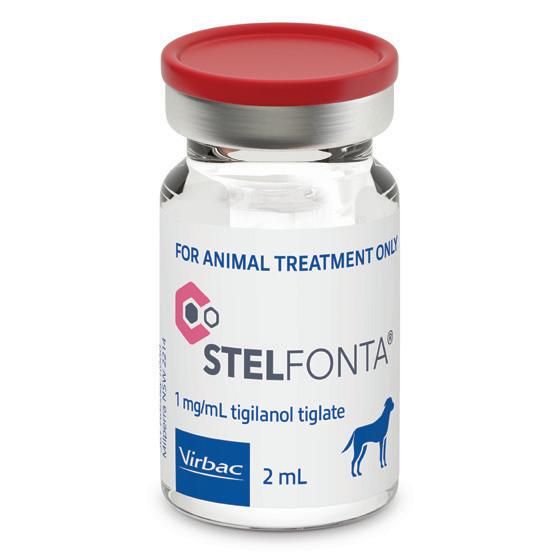
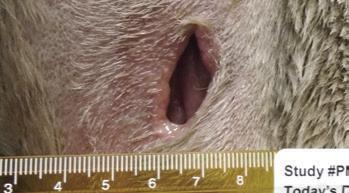
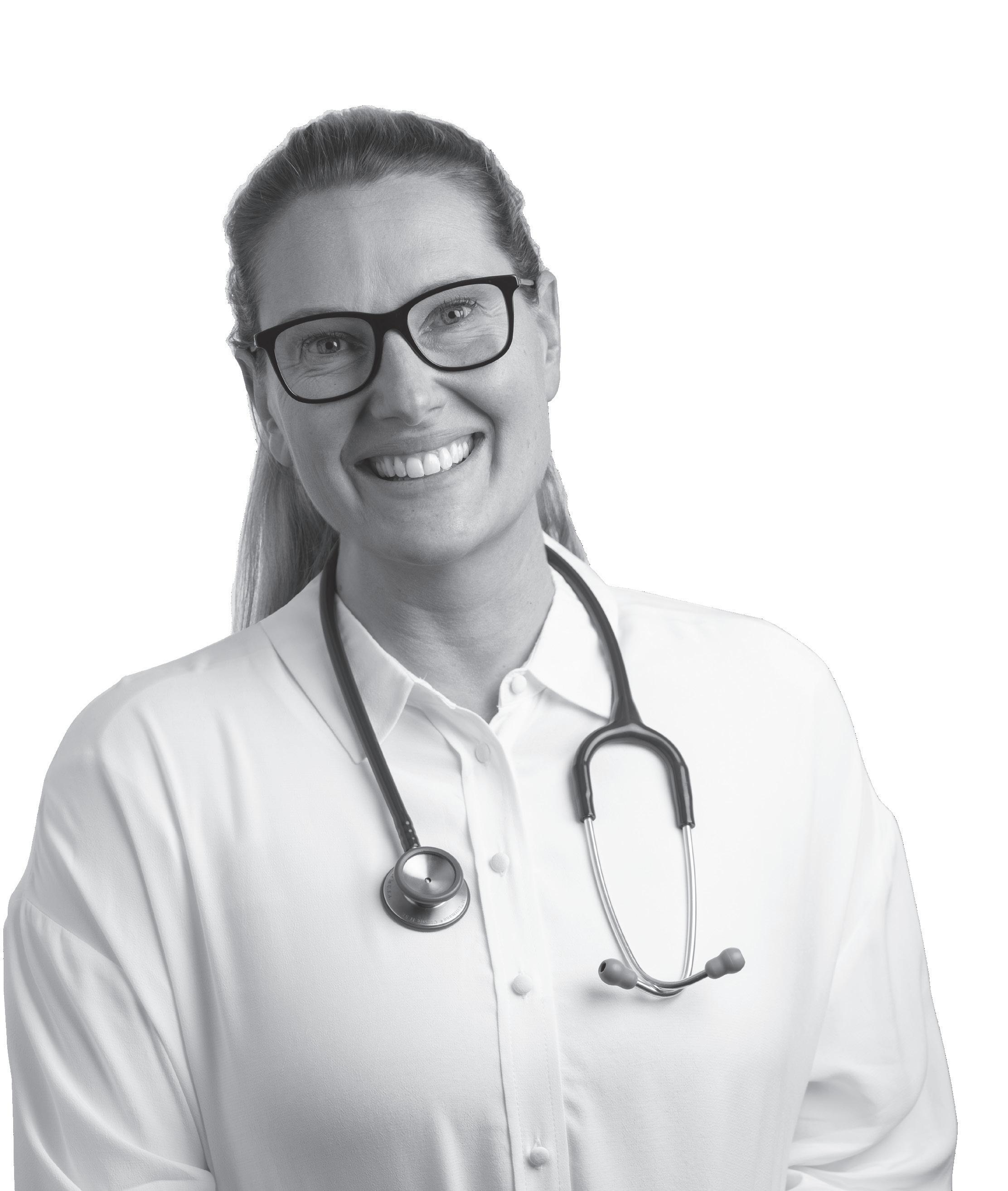
75 75% mast cell tumour removal with a single injection.1,2 Rapid and complete DAY 1 DAY 7 DAY 28 Reference: 1. APVMA number 88412. 2. De Ridder, T., Campbell, J., Burke‐Schwarz, C., et al. Randomized controlled clinical study evaluating the efficacy and safety of intratumoral treatment of canine mast cell tumors with tigilanol tiglate (EBC-46). J Vet Intern Med 2021;35(1):415-429
A non-surgical treatment for mast cell tumours. One injection
complete tumour destruction SEEING
BELIEVING For more information about STELFONTA® contact stelfonta@virbac.com.au 1800 242 100 vet-au.virbac.com/stelfonta
for
IS
The fluid prescription: intravenous fluid therapy
The total body water (TBW) of our patients approximates 60 per cent of their bodyweight (up to 80 per cent inpaediatric patients). This is further divided into the intracellular and extracellular fluid compartments: 2/3 intracellular fluid compartment and 1/3 extracellular fluid compartment.
The extracellular fluid compartment (~20 per cent of bodyweight) isdivided into the intravascular and interstitial/extravascular fluid compartments: 1/4 is intravascular space and 3/4 is interstitial/extravascular space.
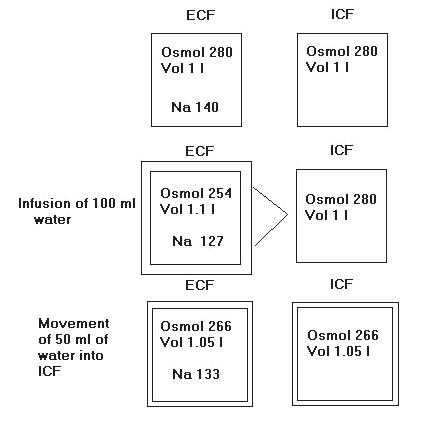
Figure 1. Free water: 100mL infused water will redistribute evenly lowering the osmolality of both compartments
Hansen BVSc MACVSc graduated from Queensland University in 1997. She worked in mixed animal practice in Queensland after graduation, before moving to Canberra to work for John Aspley Davis at Kippax Veterinary Hospital. She has completed aresidency in emergency and critical care at Melbourne University and was a resident in the same field at the Pennsylvania University Veterinary Hospital in the US. She is veterinary director of North Coast Veterinary Emergency and Critical Care(NCVECC) in Sippy Downs, Qld. Hansen is a member of the Emergency and Critical CareChapter of the ACVS.
The amount of fluid contained in the intravascular space (i.e., the blood volume) therefore approximates 8-9 percent (75-80mL/kg) of TBW in dogs and 6-7 per cent (60-70mL/kg ofbody weight in cats. Greyhounds may have higher blood volumes at 110-114mL/kg due to their lean body mass).
It is important to appreciate that the blood volume (intravascular fluid space) is a small portion (8-9 per cent of TBW in dogs and 6-7 per cent TBW) of the total body water and it communicates freely with the interstitial space (extravascular fluid space) through a semi permeable membrane along concentration gradients.
What happens to the volume of crystalloid fluid that is infused into the intravascular space?
Water moves freely between all three (3) fluid compartments until the osmolality of each compartment is equal. This means that 30-60 minutes after administration of an isotonic crystalloid fluid bolus, only 1/4 (25 per cent) of the volume of the isotonic fluid will remains within the intravascular space due to the influences of osmotic and hydrostatic forces. The remainder of the fluid volume is redistributed between the other fluid compartments.
■ Water and small ions can cross the semi permeable membrane freely between the interstitial and intravascular fluid compartments.
■ Only water can move freely between the intracellular and extracellular space.
The intravascular and interstitial fluid compartments are separated by a semi-permeable membrane, the small pores in the membrane allow the movement of ions but not larger molecular weight molecules (i.e. colloids). The force exerted on the membrane by the osmotic gradient created by the retention of these colloids is called the colloidal oncotic pressure (COP).
The natural particles in blood that create COP are proteins: globulins, fibrinogen, and albumin (albumin is the smallest at ~69,000 daltons and the most prevalent).
If the total protein falls below 4.0g/dL, acolloid (natural or synthetic) should be considered in the fluid therapy regimen, especially in patients with ongoing protein losses and or restricted protein intake. These patients are likely to have a future drop in protein levels and therefore a reduction in COP.
The continued administration of crystalloids in a hypoproteinemia patient accelerates the fluid flow across the membrane and predisposes tissue oedema. Why is fluid therapy important? The two indications for fluid therapy in our patients are hypovolaemia and dehydration. The fluid prescription needs to be tailored to one or both with respect to the fluid type, fluid rate and the duration of fluid therapy.
If you have a normotensive, euvolaemic patient consider “does this patient need fluid therapy” as it is important that we know WHY we are administering the fluid therapy to determine the end point or target of our fluid therapy regimen.
Hypovolaemia: aloss of fluid from the intravascular space Dehydration: aloss of fluid from the interstitial space
Prescribing fluid therapy involves selection of an appropriate fluid type, at the correct dose for an appropriate duration with a plan of de-escalation.
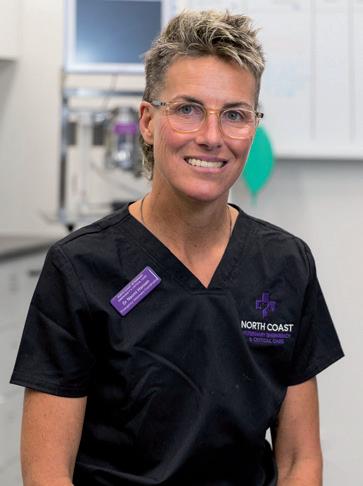
There is a growing awareness of fluid overload in veterinary patients, so it is important that we practice fluid stewardship and move away from prescribing fluid therapy to patients that are euvolaemic and normotensive.
Hypovolaemia: Afluid deficit in the intravascular space results in poor perfusion and inadequate tissue oxygenation.
■ The aim of intravenous fluid administration in hypovolaemia is to: 1. Restore the intravascular volume 2. Retain the administered fluid in the intravascular space so it will increase the vessel wall tension (i.e., maintain blood pressure).
■ The simultaneous administration of acolloid (synthetic or natural) and a crystalloid is sometimes more efficient
than crystalloid therapy alone in replacing intravascular deficits.
Physical parameters that reflect perfusion status include mentation, heart rate, pulse intensity, capillar yrefill time, mucous membrane colour, and rectal temperature.
Dehydration: Afluid deficit in the extravascular space (interstitial and intracellular fluid compartments) results in dehydration.
Physical parameters that reflect dehydration include tenting of the skin, dry mucous membranes, sunken eyes, and dullness of the cornea (Table 1).
The physical guidelines for estimating dehydration can be misleading in the following clinical situation:
■ Chronic emaciation: emaciated animals often metabolize the fat from around their eyes and the collagen from their skin resulting in poor skin turgor and sunken eyes despite normal hydration.
■ Rapid fluid loss into a thirdbody fluid space: Animals that are ‘third spacing’ fluid suffer a rapid fluid shift without clinical evidence of interstitial fluid loss.
Isotonic crystalloid fluids areused to replenish extravascular deficits and areselected based on the electrolyte and/or dextrose requirements of the patient.
Routes of fluid administration
1. Subcutaneous: In mild dehydration, subcutaneous fluids can be useful but only isotonic crystalloid fluids should be used and no more than 10 to 20 ml/kg should be given at each injection site. These fluids should be aseptically administered over multiple sites to provide an adequate fluid volume. Subcutaneous fluids are generally absorbed within 6 to 8 hours.
Naomi
Clinical Review TheVeterinarian 23 OCTOBER2022 ■ www.theveterinarian.com.au
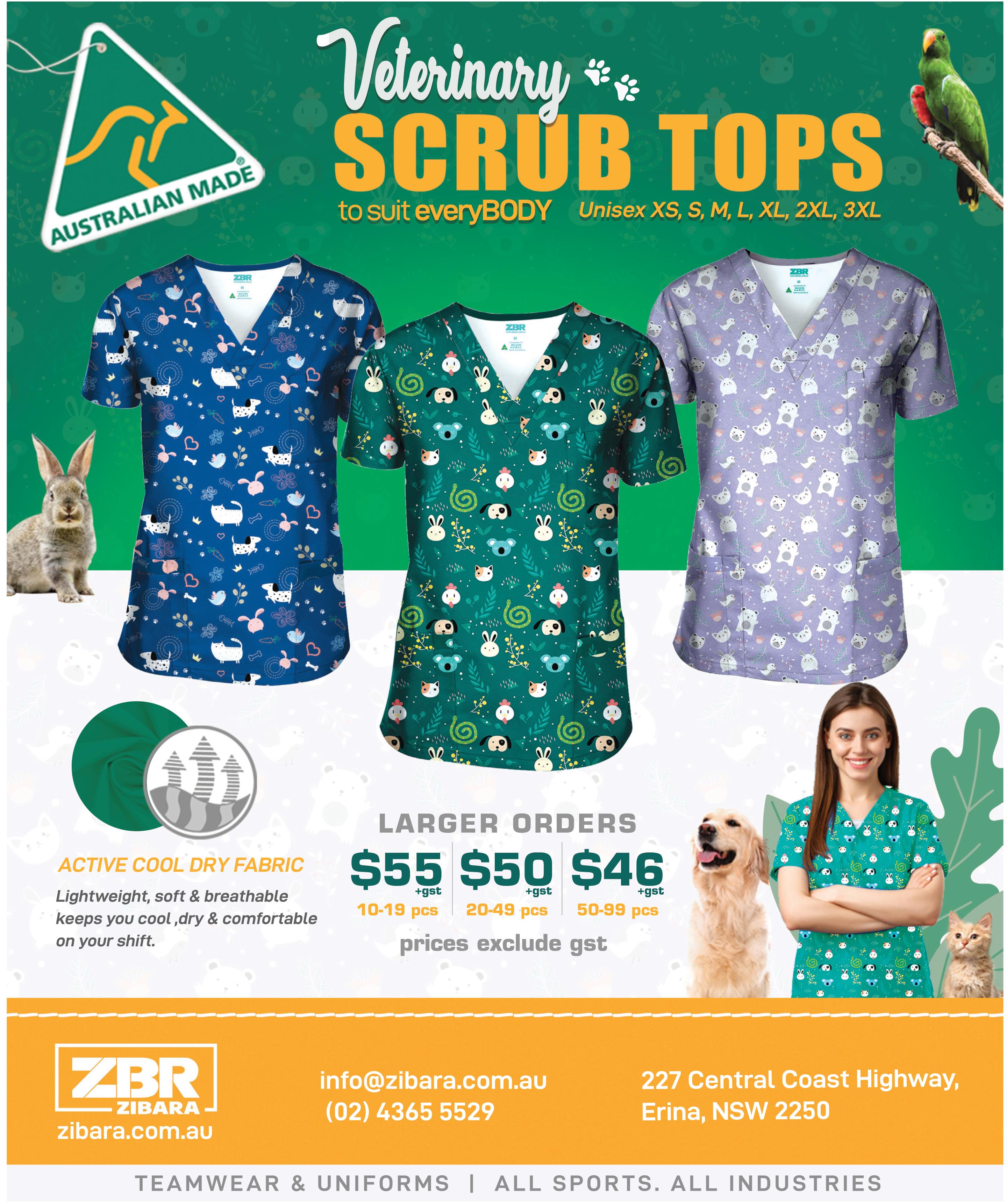
2. Intravenous: Intravenous fluid administration is indicated in dogs and cats with hypovolaemia and/or > 5-7 per cent dehydration. The fluids maybe administered through any number of accessible veins:
a.Peripheral veins
b. Jugular veins
c.Intraosseous route
Types of fluids that we can prescribe
There are three (3) categories of fluids: crystalloids, colloids (natural and synthetic) and blood products
Which Crystalloid?
Prescribing a fluid therapy regimen is dynamic bynature and requires monitoring with frequent re-evaluation and modification of the fluid type and fluid rate.
The appropriate crystalloid to administer is determined by the measured sodium and potassium concentrations and/or by the osmolality of both the animal’s serum. If blood parameters are unknown, it is best to initially select a fluid with electrolyte content, pH, and osmolality most like serum (e.g. lactated Ringer’s Solution).
Resuscitation fluids are generally isosmotic to plasma (i.e., they have a similar number of osmotically active osmoles per Litre (L) of solute (mOsm/L), or osmolarity.
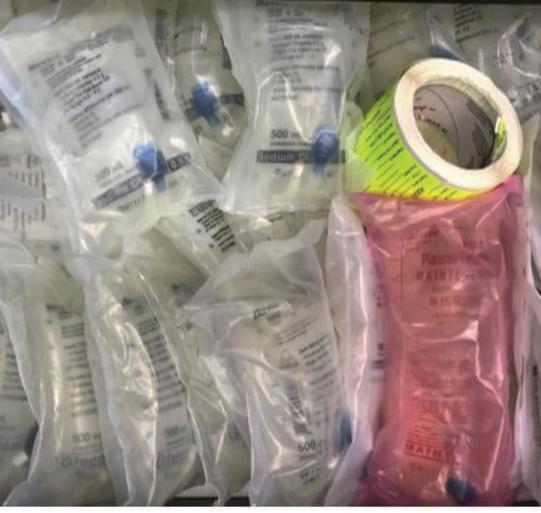
Osmolarity (mOsm/L = 2(Na+ + K+) + Glucose (mg/dL)/18 + BUN (mg/dL)/2.8.
Effective osmoles: Those causing movement of water across semipermeable membranes between fluid compartments in the body. The ability to induce the movement of water is known as tonicity. Sodium is the primary effective osmole in crystalloid solutions so isotonic = similar sodium and water to plasma, hypotonic = less sodium and morewater than plasma and hypertonic = more sodium and less water than plasma.
The tonicity of the infused crystalloid fluid affects how the fluid behaves once administered:
Isotonic crystalloid fluid: this fluid does not affect the movement of water between the intravascular space and interstitial space. The fluid is equally distributed between the two after administration. Within 60 minutes, 75 per cent of the fluid has moved out of the intravascular space into the interstitial space.
Hypotonic crystalloid fluid: this fluid affects the movement of water out of the intravascular space into the interstitial and intracellular fluid spaces. The water is moving along a concentration gradient toward the compartments with higher sodium concentrations. The aim is to equilibrate all compartments with respect to sodium levels. Within 60 minutes, 10 per cent remains in the intravascular space and 2/3 has moved into the intracellular compartment predisposing cellular oedema.
Table 1. Estimating the percentage dehydration
Estimated Percentage
Physical Examination Findings Dehydration
<5
History of fluid loss but no findings on physical examination 5
7
10
12
Dry oral mucous membranes but no panting or pathological tachycardia
Mild to moderate decreased skin turgor, dry oral mucous membranes, slight tachycardia, and normal pulse pressure.
Moderate to marked degree of decreased skin turgor, dry oral mucous membranes, tachycardia, and decreased pulse pressure.
Marked loss of skin turgor, dry oral mucous membranes, and significant signs of shock.
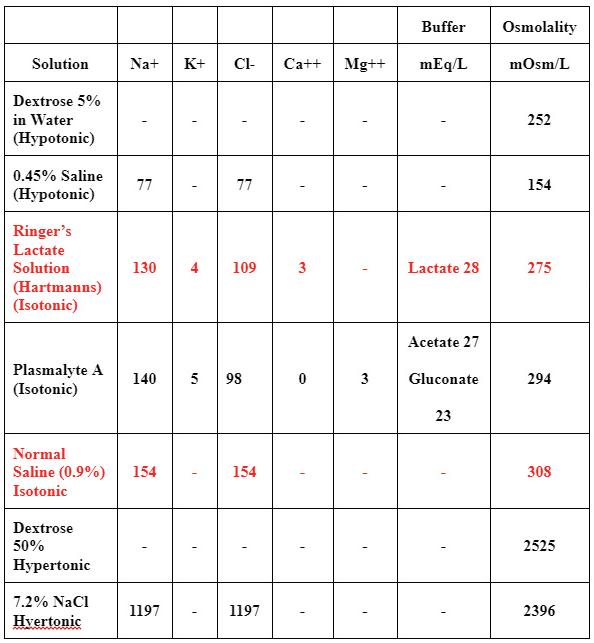
Table 2. Common crystalloid fluids, their electrolyte composition, pH, and osmolality
Hypertonic crystalloid fluid: this fluid affects the movement of water out of the interstitial and intracellular spaces into the intravascular space, toward the higher sodium concentration.
To answer the question of ‘which crystalloid’ we need to appreciate that our fluid therapy prescription is dynamic, and the crystalloid selected will be tailored to the patients’ needs. This is often directed by serial blood testing to monitor electrolytes, acid-base status, and hydration as well as monitoring markers of perfusion:
1. Hypovolaemia with intravascular volume restoration: An isotonic crystalloid is appropriate
for immediate fluid resuscitation and the presence of a buffer (i.e., Hartmanns and PlasmalyteA: lactate or acetate) can assist with acidemia by acting as a precursor for bicarbonate.
2. Dysnatremias (free water derangements) will need a more tailored fluid regimen and calculated correction of the dysnatremia and fluid balance.
3. Upper gastrointestinal tract obstructions: These often present with a metabolic alkalemia due to the sequestration of hydrogen and chloride ions. Crystalloids that are high in chloride are appropriate to these patients as they assist with normalizing the pH.
TheVeterinarian 25 OCTOBER 2022 ■ www.theveterinarian.com.au Clinical Review
Colloids: Plasma
1. Management of haemorrhage: The classical indication for plasma is in the management of haemorrhage caused by a haemostatic protein deficiency.
2.Colloidal volume support: Itis known that a substantial volume of plasma is required to raise and maintain the ALBUMIN level, but plasma can support albumin by maintaining serum protein levels in patients that are hypoproteinemic. Plasma and whole blood transfusions are considered superior to crystalloids when resuscitating trauma patients with acute haemorrhage as it replaces fibrinogen and other coagulation factors that may be lost at the time of haemorrhage. Plasma and blood products are also beneficial as they remain in the intravascular space and are minimally redistributed. It is therefore worth considering the administration of plasma in patients with a TP that is low (i.e. <20g/L) and a risk of ongoing protein loss (i.e. sepsis and trauma)
Rates and duration of fluid therapy administration
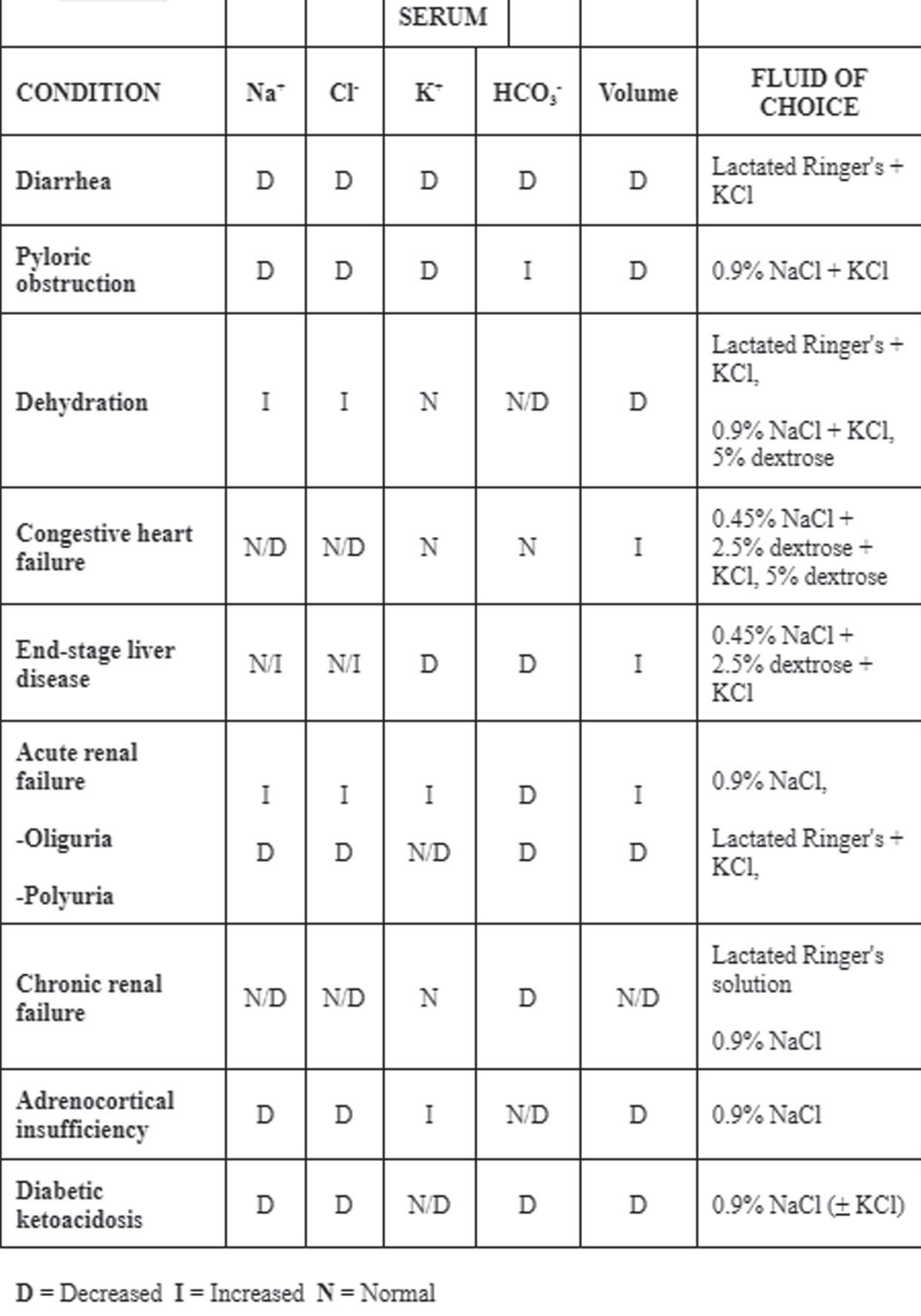


Figure 1. Acute haemorrhagic diarrhoea syndrome is a common presentation and patients require a combination of an aggressive fluid resuscitation plan as well as a monitored and dynamic optimization and stabilization fluid plan with consideration of ongoing losses.
The amount of fluid needed for replacement depends on the patient's status. Primarily we are concerned about the blood volume and secondarily the restoration of total body water and electrolytes.
The ROSE concept of fluid prescription is recognized in human medicine and can be applied to veterinary patients.
1.
2. Optimisation 3. Stabilisation 4. Evacuation Clinical Review TheVeterinarian OCTOBER 2022 26 ■ www.theveterinarian.com.au
Resuscitation
Table 3. What fluids for what disease processes? Table 4. Colloids and blood products
Resuscitation (the management of hypovolaemia):
The ROSE model supports a decisive and aggressive intravascular volume replacement regimen to reinstate perfusion and oxygen delivery to the tissues.
The management of hypovolaemic shock can be achieved with the use of crystalloid therapy, colloid therapy, or blood product therapy.
Often, we reach for the isotonic, isosmotic crystalloid and administer doses in aliquots of the total blood volume. The blood volume in adog is 80-90mL/kg and a cat 45-60mL/kg so our resuscitation regimen is designed to titrate a replacement of this volume as required in aliquots of 25 per cent-33 per cent of the blood volume with a complete review of our monitoring parameters after each bolus (i.e., Bolus therapy of 10-20mL/kg over 15-20 minutes in dogs and 5-10mL/kg over 15-20 minutes in cats).
The end points of crystalloid fluid resuscitation are: MAP >65mmHg, normalized lactate (or improved by 50 per cent), improved heart rate, improved pulse quality, improved capillary refill time and improved mentation.
Fluid responsiveness: This is something that is very difficult to assess in veterinary patients A5mL/kg fluid bolus can be administered to assess ‘fluid responsiveness’ but this is not something we undertake lightly (especially in patients that have been on fluid therapy and/or patients with known or occult heart disease as both these patients are at risk of fluid overload).
Point of care ultrasound is emerging as the tool of choice for assessing fluid status in hospitalized patients: Cardiac assessment (LA:Ao size, left ventricular end diastolic area/volume) and cauda vena cava parameters (diameter and collapsibility index). This is some work toward validating this in cats now.
Stabilization and optimization: This fluid prescription is a calculation of the daily metabolic needs:
■ ‘Maintenance’ + replacement of any fluid deficits (i.e., dehydration) and replacement of any ongoing losses (i.e. GI/renal/3rd space losses).
These phases are dynamic, and the fluid type and rate should be reviewed every 4-6 hours and amended as required.
The amount of fluid administered to a dehydrated patient can be divided into the fluid required to meet the following:
1. Returning the patient's status to normal (deficit volume)
2. Replacing normal ongoing losses (maintenance volume)
3. Replacing continuing abnormal losses (continuinglosses volume)
Calculating the fluid deficit: It is good practice to assess a patient’slevel of dehydration and then calculate his/her fluid replacement volume. This ensures the patient is effectively rehydrated before his/her maintenance fluid regimen is initiated.
The deficit volume is an estimate based on either the findings from the physical examination (Table I) or known changes in body weight.
The calculation of deficit volume is the estimated dehydration (%) multiplied by the body weight. This volume maybe difficult to replace in a24-hour period without resulting in excessive urinary loss (induced diuresis) which may be counterproductive.
It is recommended that only 75 per cent to 80 per cent of the deficit volume be replaced during the first 24 hours, don’tforget that you must also add “daily maintenance volumes” to your calculated deficit volume if the animal is not eating nor drinking.
This does not include daily maintenance volumes
Maintenance volume rates (i.e., daily metabolic needs)
The maintenance volumes are the normal ongoing losses; ongoing losses are divided into sensible and insensible losses.
■ Sensible losses can be measured and are water losses in the urine and faeces (approximately 2/3 of losses).
■ Insensible losses are normal but are not easily quantified, these water losses occur during panting or sweating (approximately 1/3 of losses).
There is an expanse of information regarding water requirements of the dog and cat and unfortunately many authors recommend dramatically different fluid and energy requirements.
Water and energy requirements are numerically the same (1 Kcal of energy = 1 ml of water).
Some of the formulas available to estimate water needs include: 50mls/kg/day, 132 kcalxBW0.75, 156xBW0.667,(30xBW) + 70, 70xBW0.75
Indirect calorimetry has been used to estimate energy (and thus water) needs for the dog and cat, these studies reinforce that previously recommended formulae over-estimate the energy (water) requirements of the cat and dog (Figures 2 and 3).
What about sick and/or injured patients, do they have a higher metabolic demand?
The question regarding energy (water) requirements in sick animals continues to elicit controversy. Traditionally it has been thought that illness, injury, and surgery result in an increase demand for energy (water). These beliefs were extrapolated from human and rodent data.
In the dog, there is suggestion that increased energy requirements are not common in the sick, injured, or surgical dog. In fact, there are some publications reporting a lower energy (water) requirement for the sick or traumatized dog. From an evolutionary perspective, it seems logical to expect the dog to preserve available energy in the event of illness or injury. It makes more sense to conserve available energy and to reduce metabolic (energy and water) requirements. Studies on dogs in a critical care situation have documented the presence of significant hypothyroid function (reduced metabolic requirements).
Figure 2. Maintenance fluid volumes for the cat (Recommended volumes are calculated from the formula (30xBWKg) + 70)
Figure 3. Maintenance fluid volumes for the dog
Is the patient receiving an inadequate fluid volume? Acute changes in body weight generally result from losses or gains in water so it is important to weight hospitalised patients daily (q6-12h). If the patient is losing body weight while being supported with crystalloid fluids, he/she is likely to be receiving an inadequate volume of fluid.
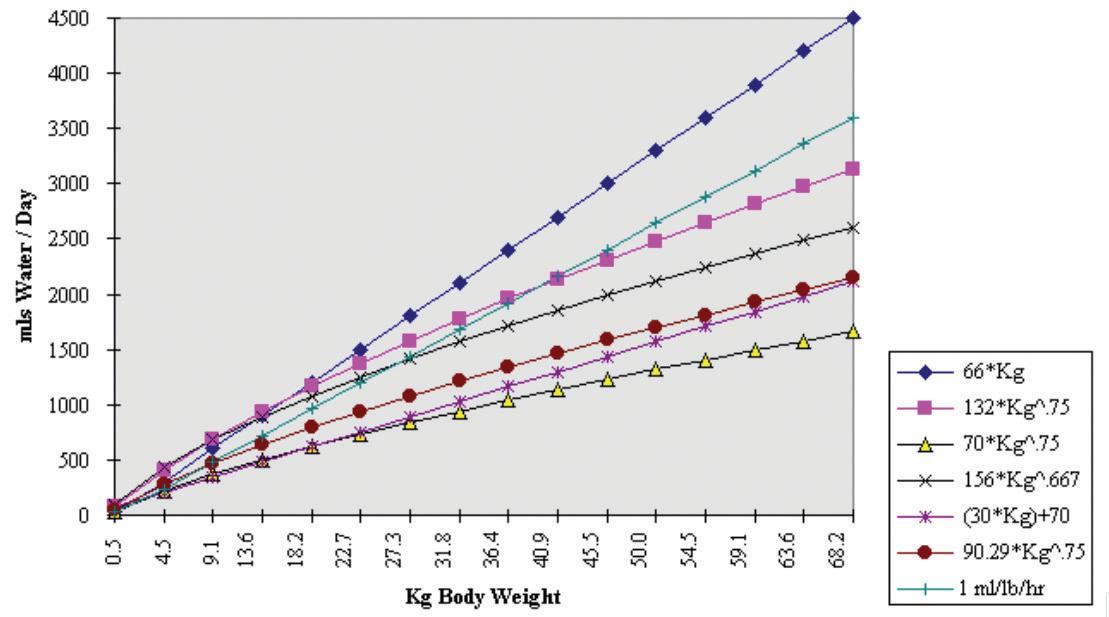
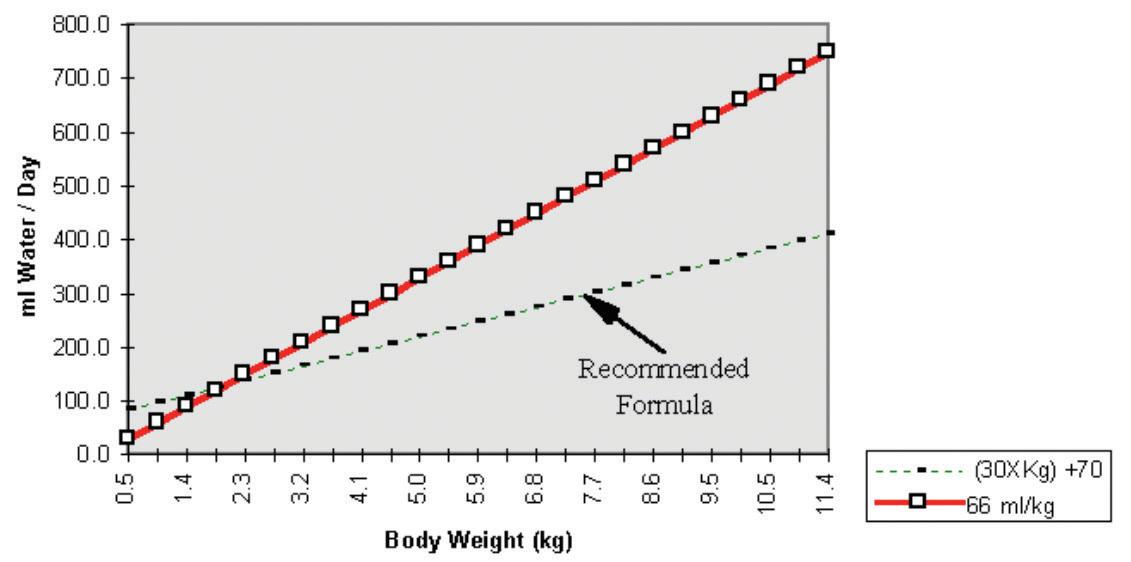
The exception to this ‘rule’ includes patients that are third-spacing fluids (i.e., peritonitis, pyometritis, pleural effusions). In these patients dehydrated may occur in the absence of a drop in body weight.
Urine specific gravity is also suggestive of hydration, a patient with a USG > 1.025 while on intravenous fluid support can be considered ‘dehydrated’.
De-escalation/discontinuation of fluid therapy: Once the patient has achieved a state of euvolaemia with minimal ongoing losses, we need to consider titrating down the fluid rate to prevent fluid overload.
Reduction of the fluid dose by 10-25 per cent at intervals of 6-12 hours is considered appropriate. …and what of overhydration?
Generally patients are monitored for pulmonary oedema as a sign of overhydration… unfortunately pulmonaryoedema is the terminal event of overhydration so we should be aware of ‘earlier’ indicators. Before pulmonaryenema you may first observe an increase in serous nasal discharge, chemosis, and finally pulmonary congestion will be auscultated before oedema.
Point-of care ultrasound:
The use of POCUS to assess the caudal vena cava for diameter and collapsibility in combination with an assessment of the pulmonaryparenchyma for B-lines and the cardiac parameters of LA:Ao and LV area/diameter may assist is your decision to start a fluid de-escalation regimen +/diuretic therapy (Furosemide 0.25mg/kg IV/IM/SC q4-6h).
Patients on intravenous fluid supportshould be examined every 4-6 hours (depending on the fluid rate and disease process).
This examination should include recording of BW, USG and TPR (including thoracic auscultation).
TheVeterinarian 27 OCTOBER 2022 ■ www.theveterinarian.com.au Clinical Review



SUBSCRIBENOWTOTHE AUSTRALIAN VETERINARY MAGAZINE! The Veterinarian provides product and industry news, expert columnists, clinical articles, practice management, research updates and nursing information together with lifestyle issues affecting your profession globally. Send me The Veterinarian magazine by mail everyissue! No.1 www.theveterinarian.com.au Name:..................................................................................................................................................... Company:............................................................................................................................................... Address:.................................................................................................................................................. Suburb:..................................................................State:.......................................Postcode:................. Telephone:.............................................................Fax:.......................................................................... Email:...................................................................................................................................................... Payment of $......................................... by cheque or money order made payable to Sydney Magazine Publishers Pty Ltd Or please charge my Visa AmexMastercard Card holder’s number:........................................................................................................................... Card holder’s name:............................................................................................................................... Signature:.......................................................................................Expiry Date:.................................... YOU CAN CHANGE YOUR DELIVERY POINT AS OFTEN AS YOU LIKE, HOWEVER NO REFUNDS AVAILABLE. One year: $93.50 (incl GST) Two years: $138.60 (incl GST) Three years: $182.60 (incl GST) Overseas rates (all prices Australian dollars) New Zealand $105 (AUD) 1 Year $160 (AUD) 2 Years $210 (AUD) 3 Years Rest of the world: $135 (One year) ❏ ❏❏❏ ❏ ❏ ❏ ❏ ❏ Phone (02) 9487 6627 Mail POBox 305 Millthorpe NSW 2798 www.theveterinarian.com.au
Business Agility Part 4: Your Community
The last part of this series on business agility willfocus on the community. Specifically, how your local community and their values play arole in the success of your business. I will be indulging in a personal passion of mine –Social Enterprise, to aid in the discussion of this article. The term social enterprise is becoming more common amongst business these days, but the actual practice of Social Enterprise has been around for a long time. Itisacomplex topic to delve into, and a more difficult term to neatly define, but I trust this article provides a light introduction to the topic and ignites some ideas on how your business may benefit from enhanced community engagement through Social Enterprise.
The academic definition of Social Enterprise continues to be debated. Some examples of these definitions and discussion include social and economic dimensions in Social Enterprise (Borzaga and Defounry, 2001), Social Business (Yunus, 2007), and Virtue Ventures, (Alter, 2007). While there is not time dissect these definitions, we can briefly review some key perspectives that can be applied in an operational capacity to your business. For further reading on Social Enterprise, you can review the list of references at the end of this article.
■ Additional revenue as a result of client branding and brand awareness
■ You can support more clients and patients!
For each benefit you expect from your social engagement, ensure you have a specific measurement attached. For example, if you expect to increase brand awareness through community engagement, review your marketing analytics prior and after each specific event, and look for patterns of increased online engagement, and any new referrals that have come specifically from your events. You should also have a realistic goal to aim for, such as an increase in new referrals by X per cent, or increase to website traffic by X per cent. Consider the financial value associated with each new referral, and the value of increased website traffic to determine your overall financial goal. While it would be ideal for all events and engagement opportunities to yield a positive return on investment, some must be accepted as loss leaders.
What are my opportunities?
Youare most likely already engaging with your community already.However, you may not realise how you are doing this, the impact it
and social media platforms. The important thing is to understand what you are measuring, why you are measuring, and be consistent. Lastly, always take action with the results you find – it would surely be a waste of time and effort to do nothing with your results.
■ Take action Results in a smart looking report won’t improve anything on their own. Results need interpreting, a perspective, a plan, and a team to action the plan. If it is evident that some of your community engagement activities are yielding no positive impact, it is essential to dive deeper and understand why. For example:
■ How does this specific community engagement tool aid the community?
■ Does the community see any value in this engagement?
■ What value does my team see in this engagement?
■ What financial impact has this had on my business?
■ How does this activity align with my values and my strategic plan?
Alternatively, you may find great success in some of your community activities. These results are also essential to evaluate, and if possible, replicate this across other aspects of your community engagement strategy. Remaining relevant and of value to your local and professional community is essential in retaining agility in your business. Community engagement and connection is one way you can ensure success this area. Please contact Gray Counsel should you require further information on Social Enterprise Partnership opportunities, or specific consultation regarding community engagement.
References
1. Borzaga, C and Defounry, J 2001, The Emergence of Social Enterprise,Routledge Press, London & New York.
Why bother?
This is an appropriate question to ask, considering the hectic and ever-changing industry we are working in. Most businesses are still focused on the recovery and re-establishment from the last three years of pandemic restrictions. Getting the basics right – cost of goods, appropriate staffing, client retention, and workplace health and safety are just a few of the critical areas most businesses are spending their time and money on now. So why bother with community engagement?
The time and financial investment required to successfully engage with community shouldn’t be disregarded, however the benefits have consistently shown to outweigh and cost to a business who can effectively engage their local community. As with any undertaking, you should always ensure your values underpin your plan, and that you have a clear (and realistic) vision of what you want to achieve. Some examples of benefits include:
■ Enhanced brand awareness through the community
■ Increased credibility among your community and profession
■ Exposure to potential new client groups
■ Exposure to potential new staff members
■ Improved bond between both clients and staff who align with your community values
has to your business, and what opportunities you can glean from this. Examples of effective approaches to community engagement include:
■ Partnerships with not-for-profit organisations
■ Council or government partnerships
■ Educational visits to schools and community groups
■ Professional forums, education evenings, and CPD events
■ Digital education to the wider community
These are just a few examples of the various opportunities your business has to engage positively with your local and professional community. You may already be doing some or all of these! However, how are you measuring the impact, and what areas can you improve?
■ Measure your results
Regardless of what you are measuring (income, referrals, or client satisfaction), everything should be measured. Without this you can’t determine what needs improvement, or what success you need to emulate.
There is no need to get too technical on how you measure each outcome, and most data can be collected through your own software or in the back end of your website
2. Yunus, M 2007, Creating a World Without Poverty, Social Business and the Future of Capitalism,Public Affairs, United States of America.
3. Kim Alter (200)7 Virtue Ventures: virtueventures.com, Social Enterprise Typology.
Michelle Gray
My
nursing. Now,many years later,Iam privileged to lead multidisciplinary teams across Australia. I have worked in leadership roles within universities, corporate human health care, and media industries in addition to my work in the veterinary field. I have an MBA (research) and am on my way to commencing a PhD next year in veterinarybusiness and not-forprofit industry. When I’m not working my day job, I also support small business through my consulting firm Gray Counsel. Email me at info@graycounsel.com
TheVeterinarian 29 OCTOBER 2022 ■ www.theveterinarian.com.au BUSINESS
journey into the veterinary industrybegan with
Ovine brucellosis outbreak worry
From page 3
Studs do not require registration to sell rams as breeding stock.
Premium registered animals are attracting prices over $100,000, and some producers wanting to cut costs mayconsider unaccredited stock.
“If a ram that’s infected serves a ewe and a clean ram serves the same ewe, that’s how it’s transmitted,” Roberts said.
Goondiwindi vet Mike Rival said poor fencing between properties could also hasten new infections.
“Then it will be the equivalent of asocial disease and it could be four neighbours impacted by one operator,” he said.
Infected animals were more likely to suffer wild dog or pig attacks because OB increases the duration of the lambing period, Rival said.
While it is not compulsory for producers to notify state authorities about cases of OB in Queensland, there is an obligation to not spread the disease.
Rival said eradicating OB from flocks is difficult and is calling on Queensland to have a transparent accreditation system like that found in NSW.
“It's published on a website, where the stud breeders who are accredited are on a list,” he said.
■ SAMWORRAD
AVA lobbies for government investment
From page 1
that is difficult to pay back with current low wages.”
Millar said the poor mental health present in the profession stems in part from providing quality services which are not properly resourced.
“The research tells us that vets have a higher rate of mental health issues compared to the general public, and we are calling on the Victorian government to provide mental health support directly to the veterinary profession.”
The AVA supports reform of Victorian animal welfare legislation to responsibly update elements of the current Act and is requesting alignment of animal welfare and veterinary legislation so that it is solely skills, qualifications and com-
petencies determining who may perform ‘veterinary competencies’.
Only achieving this will ensure animals and the public are protected from animal welfare harms and zoonotic disease, the AVA said.
The Association has asked for greater planning and allocation offunds to vet services in areas of greatest need, such as animal welfare, wildlife and care, animal population control and biosecurity.
The AVA added that private vets in the state create vast public benefit at their own cost, such as treating un-owned injured and sick animals, subsidised desexing and surveillance for early detection of disease.
■ SAMWORRAD
Aussie vets return from Ukraine
From page 1
Lillie said persistence and patience was required to overcome language barriers.
During rare opportunities for breaks from work, Tomkins and Lillie browsed shops in Vinnytsia, around six hours from the front line.
“You wouldn't think there was awar going on until you heard an air-raid siren go off,” Lillie said.
The pair remained safe and completed a series of surgeries, tests and health checks and achieved their goal that each animal at the
work site was desexed and vaccinated by the end of the working trip.
Despite the difficult conditions, Lillie said it was difficult to return home.
“The guys didn't want us to go, so they tried all sorts of guilt trips and schemes to get us to stay longer, which we would've loved to have done if we didn't have the responsibilities back home," she said.
The couple told the ABC they are open to a similar trip in future.
■ SAMWORRAD
Virbac supports WSAVAreproduction initiatives
From page 5
“Giving advice on reproduction and carrying out spaying and neutering procedures can form a large part of a general clinician’s work, with many of our members also involved in large-scale spayneuter programs,” WSAVA President Siraya Chunekamrai said. “Our Reproduction Control Committee is helping them to make sciencebased choices for the management of reproduction, while safeguarding animal welfare and supporting the human-companion animal bond.”
“We are delighted to welcome Virbac, both as a supporter of the Reproduction Control Committee and as a WSAVA Partner, helping us to deliver our mission to advance the health and welfare of companion animals worldwide.”
“At Virbac, we have the conviction
that our pets should no longer be castrated only for convenience reasons,” Sebastien Huron, chief executive officer of Virbac Group, said. “Fifteen years ago, surgery was the most common option to control reproduction. Today, easy to implement and reversible alternatives that preserve the integrity and well-being of our pets exist. It is therefore our duty to inform all veterinarians and dog and cat owners about the available options, to ensure a sound knowledge and tailor-made reproduction control of each pet. Weare delighted to be associated with this Reproduction Control Committee and to be a partner of WSAVA, in support of our purpose: Advancing the health of animals with those who care for them so we can all live better together”.
Aproblem of plague proportions
From page 3
European and domestic populations, crucial to identifying the origins of Australia’s rabbits, had not been taken.
The study found that as rabbits moved further away from Barwon Park, genetic diversity declined, and rare genetic variants – that can occur in rapidly growing populations –became more frequent. Evidence was also found of additional introductions and established local populations, but these had failed to spread far.
“For example, rabbits first introduced in Sydney haven’t spread beyond, partly because of their domestic origins. Whereas wild rabbits are found all over the country. The time lag from the initial introduction of rabbits, and the lack of success before the arrival of thewild genome type in 1859 suggests it’s specific traits which acted as trigger for the invasion,” Letnic said.
Joel Alves, lead author and post-doc toral researcher at the UK’s Oxford University, and Portugal’s Research Centre in Biodiversity and Genetic Resources, said the study served as a reminder that the actions of just one person, or a few people, can have devastating environment impacts.
■ ANNELAYTONBENNETT
Clues to help protect frogs from deadly Bd virus
From page 5 to do with the frogs shedding their skin, but it could equally be due to many other factors,” Besedin said. The study showed that captivity caused a significant reduction in skin bacteria diversity and richness, possibly through the loss of a microbial reservoir, high stress, reduced immunity, and sloughing, all of which future research will need to take into consideration.
“Frogs released into the wild after captivity programs will likely have reduced resilience to pathogens, so more research is needed to promote a healthy microbiome, possibly even with the help of biotics,” he said.
■ ANNE LAYTON-BENNETT
‘Effect of captivity and water salinity on culture-dependent frog skin microbiota and Batrachochytrium dendrobatidis (Bd) infection’ is available at doi.org/ 10.1080/03721426.2022.2086358
Abstracts - cats and dogs
From page 14
between pets, whilst owners who let pets introduce themselves did not. Early,gradual, owner-led introductions of puppies to household cats should be encouraged.
Rachel H Kinsman1,Sara C Owczarczak-Garstecka1,Rachel A Casey1,Rosa E P Da Costa1, Séverine Tasker23, Jane K Murray 1 Animals (Basel).2022 Sep 13;12(18):2389.doi:10.3390/ani 12182389.
1Dogs Trust, London EC1V 7RQ, UK.
2Bristol Veterinary School, University of Bristol, Bristol BA6 8DD, UK.
3Linnaeus Veterinary Limited, Solihull B90 4BN, UK.
Free PMC article
TheVeterinarian
Sydney Magazine Publishers Pty Ltd ACN 102752787 ISSN 1447-9768
PO Box 305 Millthorpe NSW 2798

Tel: 02 9487 6627
Director - Clem Martin Email: clem.martin@vetmag.com.au
Editorial Advisory Board
Thomas Donnelly BVSc DipVP
DipACLAM
Nicholas Kannegieter BVSc
DipVetClinStud PhD FACVSc
David Lidbetter BVSc MVS FACVSc
DipECVS Dip ACVS
Angus Martin BVSc
Mary Porter BVSc (Hons) MACVSc
Jeffrey Smith BVSc FACVSc Dip ACVO
David Vella BSc BVSc (Hons) DABVP
Editor - Luke Martin Tel: 0418 698 228
Email: luke.martin@vetmag.com.au


National Sales Manager
James Martin Tel: 0432 575 877
Email: james.martin@vetmag.com.au
Designer - Anne Norrell
Email: annenorrelldesign@gmail.com
Printed by Newstyle Printing
41 Manchester St, Mile End SA 5031
Post Print Approved PP255003/06488
All material in The Veterinarian is subject to copyright and must not be reproduced wholly or in part without the written permission of the Editor.
Views expressed in The Veterinarian are not necessarily those of The Veterinarian orSydney Magazine Publishers Pty Ltd.
Subscriptions - Clem Martin Tel: 02 9487 6627 Email: clem.martin@vetmag.com.au
Subscriptions
Australia
$93.50 for 1 Year $138.60 for 2 Years $182.60 for 3 Years New Zealand
$105 (AUD) 1 Year $160 (AUD) 2 Years $210 (AUD) 3 Years USA/Canada (airmail) $135 UK/Europe (airmail) $135
*All rates arequoted in Australian dollars
TheVeterinarian OCTOBER 2022 30 ■ www.theveterinarian.com.au
SUBSCRIBE NOW! Mail POBox 305 Millthorpe NSW 2798
Phone (02) 9487 6627 www.theveterinarian.com.au
News
Matschie's
tree-kangaroo
(Dendrolagus matschiei)
Also known as the Huon tree-kangaroo, this animal is native to the Huon Peninsula of northeastern New Guinea Island, Papua New Guinea.
The scientific name honours German biologist Paul Matschie, though the indigenous population refers to it as a boongary.
Though they shareaname, they aremuch smaller than Australian kangaroos, reaching only 81cm in height and 11kg in weight.
Feature CREATURE
Leaping ahead
Advances in dog and cat lameness management


VIRTUAL CONFERENCE
November 15, 16 and 17, 2022
You can't afford to miss our upcoming virtual conference convened by Wendy Baltzer, specialist in small animal surgery, sports medicine and rehabilitation.
Joining Wendy are a host of international presenters including Sharon Kerwin (surgeon and neurologist), Joseph Wakshlag (nutritionist and specialist in sports medicine and rehabilitation), Kristin Kirkby Shaw (surgeon and specialist in sports medicine and rehabilitation), Janice Huntingford (specialist in sports
medicine and rehabilitation, chiropractor and acupuncturist) Rachel Pollard and Nicola Moffatt (diagnostic imaging), Philip Moses, Gordon Corfield and Peter Delisser (small animal surgeons), Sanaa Zaki (veterinarian and biomedical researcher) and Donna White (Sydney Animal Pain Clinic). We look forward to you joining us online!
Register now cve.edu.au
#leapingahead Centre for Veterinary Education | +61 2 9351 7979 | cve.enquiries@sydney.edu.au






















































































